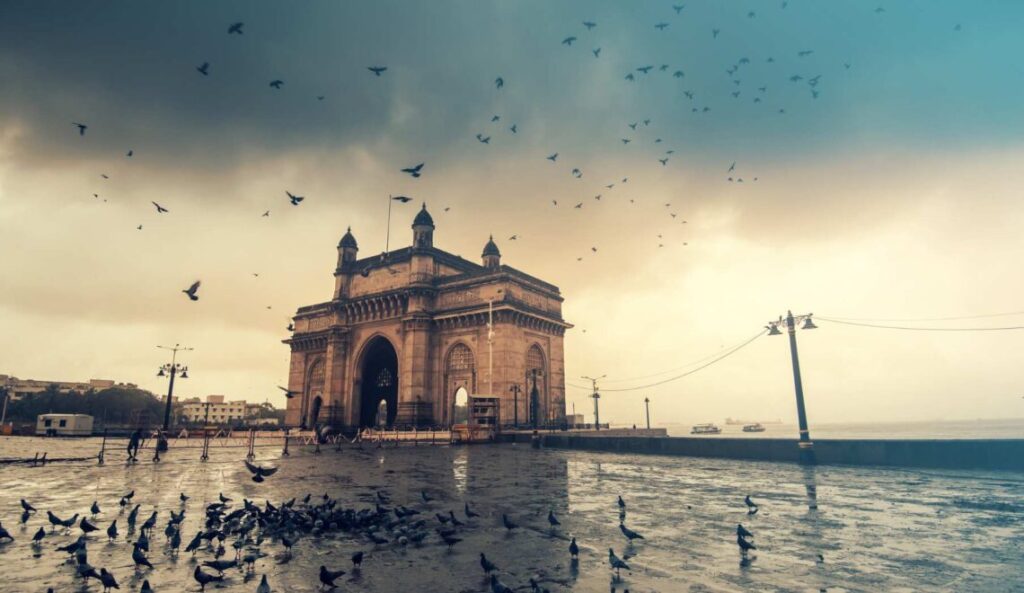Join us as we journey through Maharashtra, exploring its unplugged tourist places beyond the ordinary, offering a tapestry of heritage, nature, and adventure.
Maharashtra is a symphony of cultural heritage, natural splendour, and modern aspirations. In this comprehensive guide, “Maharashtra Unplugged: A Comprehensive Guide to Tourist Places in Maharashtra,” we invite you on an enchanting journey through the heart of India, uncovering the hidden gems and well-known wonders that make this state a traveller’s haven.
Welcome to the heart of India’s diversity, where tradition meets modernity, and every corner tells a story—Maharashtra.
With its rich history, vibrant culture, and diverse landscapes, this state is a treasure trove for travellers seeking an authentic and enriching experience.
Our odyssey commences in the thriving metropolis of Mumbai, a city that pulsates with life and encapsulates the spirit of dreams.
Mumbai, the financial capital and the city of Bollywood, is a microcosm of contrasts—where historic landmarks like the Gateway of India stand tall against the glittering backdrop of modern skyscrapers.
Traverse the vibrant markets of Colaba Causeway, savour the panoramic views along Marine Drive, and immerse yourself in the city’s cultural heritage at Chhatrapati Shivaji Maharaj Vastu Sangrahalaya.
Beyond the glamour and glitter, Mumbai unfolds as a city with a heart, embracing tradition and modernity. From the iconic Elephanta Caves to the vibrant street food of Khau Gallis, every corner of Mumbai tells a tale of resilience, aspiration, and cultural amalgamation.
1. Ajanta Caves

Ajanta Caves, one of the best tourist places in Maharashtra and a UNESCO World Heritage Site, represents an architectural marvel in the Sahyadri Hills.
Dating back to the 2nd century BCE, these Buddhist caves comprise 30 rock-cut structures adorned with intricate sculptures and breathtaking paintings.
The exquisite frescoes depict the life of Buddha and various Jataka tales, showcasing a fine blend of artistry and spirituality.
The caves, carved into a horseshoe-shaped cliff, stand as a testament to ancient Indian craftsmanship and the evolution of Buddhist art.
Dating back to the 2nd century BCE, the Ajanta Caves are a complex of rock-cut Buddhist cave monuments that served as retreats, monastic spaces, and prayer halls for Buddhist monks.
The caves remained hidden in obscurity for centuries until their accidental rediscovery by a British officer in the 19th century.
With their timeless charm and spiritual aura, Ajanta Caves continue to be a pilgrimage site for those seeking a connection with India’s artistic legacy.
As visitors explore the dimly lit corridors and gaze upon the ageless frescoes, they embark on a journey through time, unraveling the mysteries of a bygone era etched into the very heart of the Western Ghats.
2. Ellora Caves
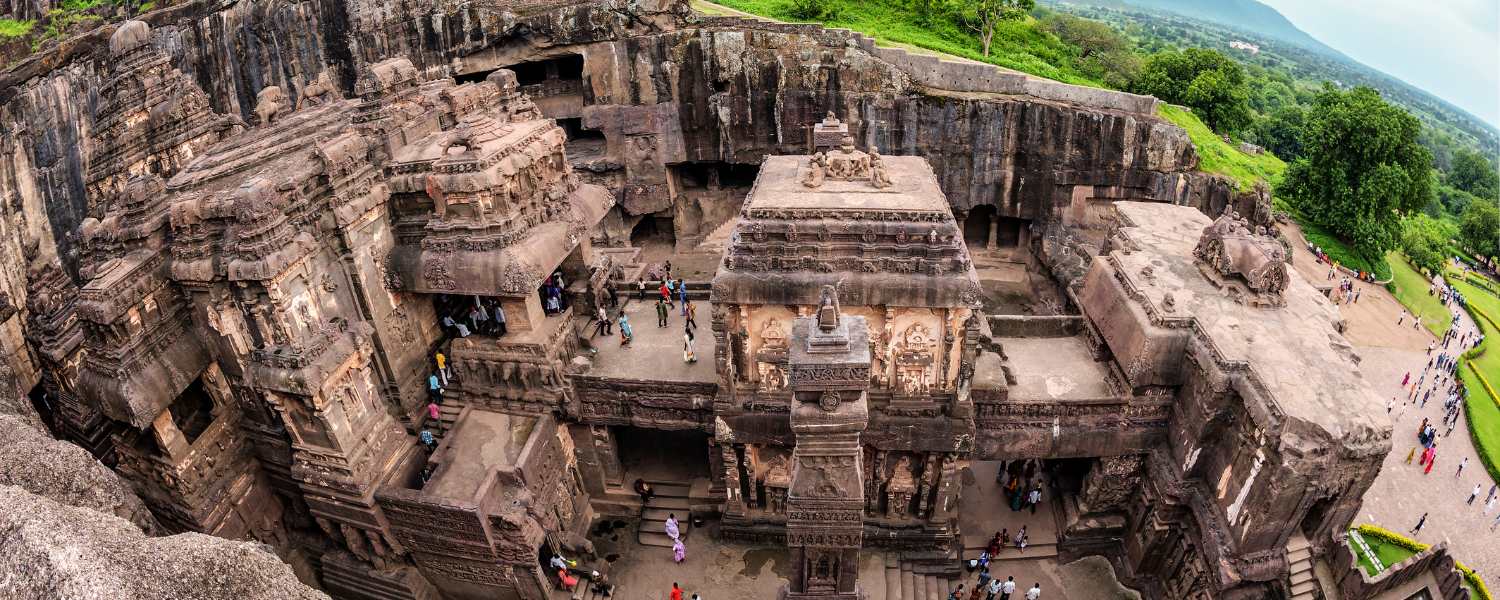
Ellora Caves, another UNESCO World Heritage Site, presents a breathtaking synthesis of Buddhist, Hindu, and Jain rock-cut temples and monasteries.
Carved between the 6th and 10th centuries, the 34 caves showcase an unparalleled architectural and artistic diversity.
The Kailasa Temple, dedicated to Lord Shiva, stands out with its monolithic structure, representing one of the largest rock-cut temples globally.
Ellora Caves, a remarkable testament to religious harmony, draws visitors on a journey through ancient Indian religious practices and artistic finesse.
Ellora’s history dates back to the 6th century CE, with its caves representing an amalgamation of Hindu, Jain, and Buddhist religious influences.
Artists meticulously carved 34 caves into the Charanandri Hills over the centuries, showcasing a harmonious coexistence of different faiths.
With their celestial beauty and spiritual resonance, the Ellora Caves are a living testament to the artistic prowess and religious harmony that defined India’s ancient civilizations.
As visitors wander through the hallowed halls and intricate passageways, they journey through time, unraveling the extraordinary narrative etched into the very bedrock of Maharashtra’s history.
3. Shaniwar Wada, Pune

Shaniwar Wada, located in Pune, is a historic fortification that resonates with Maharashtra’s history. Built in 1732, this imposing structure served as the seat of the Peshwas until 1818.
Though partially destroyed by a fire in 1828, the palace complex still exudes grandeur with its intricate woodwork, fountains, and imposing walls.
Shaniwar Wada also has a poignant history, as it witnessed the mysterious and tragic tale of Narayanrao, the young Peshwa. Today, the fort stands as a symbol of Pune’s regal past and architectural splendor.
Apart from its architectural splendor, intriguing legends shroud Shaniwar Wada, including tales of supernatural occurrences.
The famous story of a young Peshwa, Narayan Rao, who was assassinated within its walls, and the subsequent belief in the haunting of the fort, add an air of mystique to its historical narrative.
Recognized as a historic landmark, Shaniwar Wada draws tourists, history buffs, and photographers who seek to immerse themselves in the grandeur of Maratha architecture and relive the stories that echo within its walls.
Shaniwar Wada, with its regal allure and storied past, continues to be a living testament to Pune’s role in shaping India’s history.
As visitors explore its hallowed halls and intricate chambers, they embark on a journey back in time, where the clinking of swords, the strains of classical music, and the whispers of political intrigue linger in the very stones of this majestic fort.
4. Chhatrapati Shivaji Maharaj Terminus, Mumbai
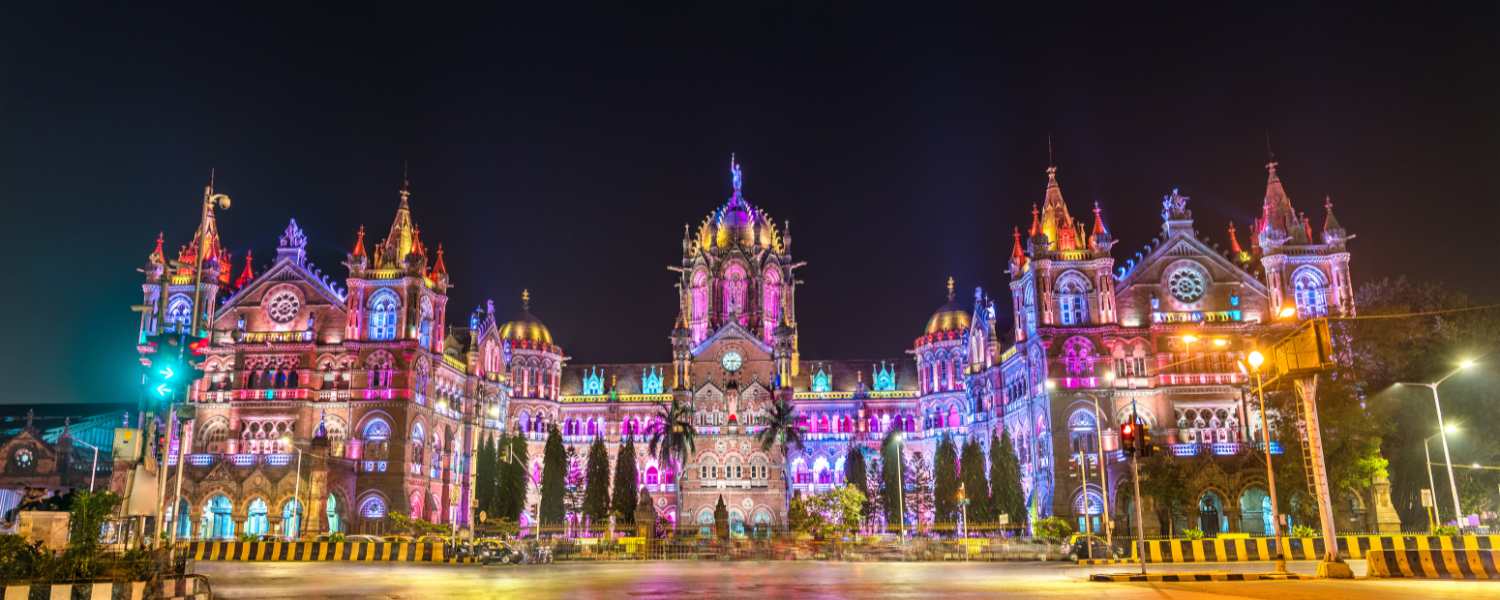
Chhatrapati Shivaji Maharaj Terminus (CSMT), formerly Victoria Terminus, is a UNESCO World Heritage Site, an iconic railway station in Mumbai, and a must-visit tourist Place in Maharashtra.
Built in the Victorian Gothic style, this architectural masterpiece is a testament to Mumbai’s colonial past and thriving present.
Completed in 1888, the station’s intricate carvings, turrets, and domes reflect a fusion of Indian and European architectural styles.
CSMT is not just a transportation hub; it’s a living heritage site that pulsates with the energy of Mumbai, connecting the city’s diverse neighborhoods.
The crowning glory of CSMT is its impressive dome, adorned with a splendid female figure representing progress. The dome is complemented by a series of statues representing commerce, agriculture, engineering, and science, symbolizing the multifaceted growth of Mumbai.
CSMT offers a mesmerizing light and sound show in the evening, transforming the façade into a canvas of vibrant colours.
The show narrates the terminus’s history and significance, attracting locals and tourists who gather to witness the visual spectacle.
With Victorian opulence and historical resonance, Chhatrapati Shivaji Maharaj Terminus remains an enduring symbol of Mumbai’s past and present.
As commuters rush through its halls and tourists marvel at its grandeur, CSMT stands as a living monument, narrating the tale of a city that has seamlessly woven its colonial legacy into the vibrant fabric of modern India.
6. Bibi Ka Maqbara, Aurangabad

Bibi Ka Maqbara, often known as the “Taj of the Deccan,” is a mausoleum built & a well-known tourist place in Maharashtra.
Constructed in the mid-17th century, this architectural gem echoes the grandeur of the Taj Mahal but with distinct Mughal and Deccan influences.
The mausoleum, surrounded by a picturesque garden, features intricate carvings, delicate latticework, and a pristine marble dome.
While less expansive than the Taj, Bibi Ka Maqbara captivates visitors with its elegance and the poignant love story it represents. It stands as a remarkable testament to the artistic legacy of the Mughal era in Aurangabad.
The central dome, crowned with a lotus finial, is a striking feature that dominates the mausoleum’s silhouette. Flanked by four soaring minarets, the Bibi Ka Maqbara’s architecture draws inspiration from Persian and Mughal styles, creating an aura of regality and solemnity.
Much like the Taj Mahal, the Bibi Ka Maqbara is a symbol of love and devotion, immortalizing the memory of a beloved spouse.
The architectural finesse and the emotional resonance embedded in its creation make it a significant cultural landmark in the Deccan region.
The Bibi Ka Maqbara, with its sublime replication of the Taj Mahal’s grandeur, invites visitors to step into a world of Mughal opulence and timeless love.
As the sunlight bathes its walls and the gardens bloom with vibrant hues, the mausoleum continues to echo the rich cultural tapestry of the Deccan, inviting all who visit to witness the enduring beauty crafted in stone and devotion.
7. Kolaba Fort, Alibaug
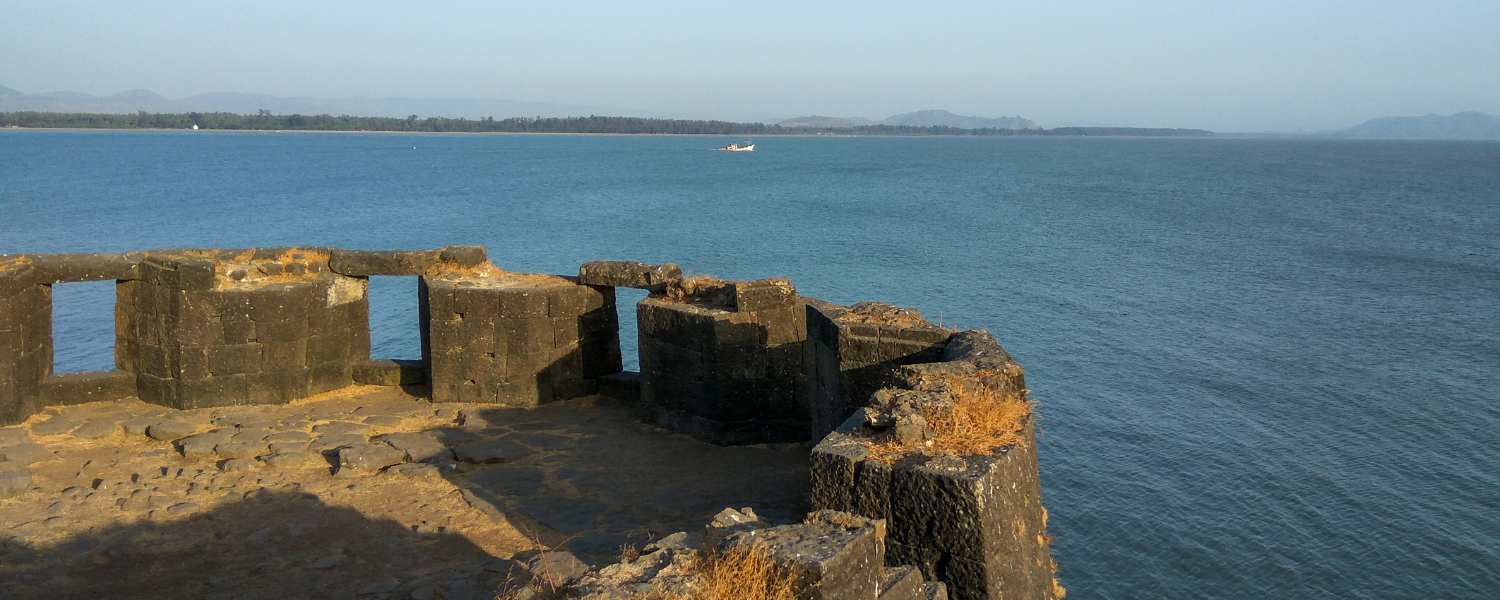
Kolaba Fort is a historic coastal fortress located in Alibaug, Maharashtra, and is the second-most popular tourist place in Maharashtra.
Shivaji Maharaj built this fort in the 17th century, and it is a silent sentinel in the Arabian Sea. Accessible during low tide via a causeway, the well-preserved fortification and the ruins within tell tales of Maratha’s glory and strategic foresight.
Kolaba Fort, surrounded by the serenity of the sea, is not just a historical marvel but also a tranquil escape for those seeking a glimpse into Maharashtra’s maritime past.
What adds to the charm of Kolaba Fort is its unique accessibility. During low tide, a picturesque causeway emerges, allowing visitors to walk across the shallow waters from Alibaug’s shores to the fort.
Besides its historical significance, Kolaba Fort has become a haven for birdwatchers.
Kolaba Fort, with its historical resonance and seaside allure, invites all who venture to Alibaug to step back in time.
As the waves gently lap against its weathered walls and the sea breeze whispers of maritime tales, the fort stands tall, a guardian of Maharashtra’s coastal history and a beacon for those who seek a connection with the bygone era of naval prowess.
8. Lohagad Fort, Lonavala

Lohagad Fort, perched atop the Western Ghats near Lonavala, is a trekker’s delight and a testament to Maratha military architecture.
Dating back to the 18th century, the fort was strategically important for its commanding view of the surrounding valleys and trade routes.
The sturdy iron gates (Loha means iron) and the intricate steps leading to the fort showcase the engineering brilliance of the Marathas.
The panoramic views of the Sahyadri range from the fort’s ramparts to the lush greenery, making Lohagad Fort a favourite destination for history enthusiasts and nature lovers.
Built-in the 18th century by Chhatrapati Shivaji Maharaj, Lohagad Fort, meaning “Iron Fort,” was strategically positioned to overlook the trade routes that passed through the Sahyadri mountain range. Its robust structure and elevated location made it a formidable stronghold for the Marathas.
Today, Lohagad Fort has become a popular destination for trekkers and history enthusiasts. The trek to the fort takes visitors through scenic trails, ascending to the summit where the historic ruins await. The journey offers a physical challenge and a chance to relive the footsteps of Maratha warriors.
Lohagad Fort comes alive during festivals such as Ganesh Chaturthi when devotees trek to the fort to celebrate amidst its historic ambiance.
The fort, steeped in cultural and historical significance, becomes a backdrop for festivities and religious fervour. Lohagad Fort, with its rugged charm and historical resonance, invites all who seek adventure and a connection with Maharashtra’s martial legacy.
9. Janjira Fort, Murud

Janjira Fort stands as an impregnable maritime fortress off the coast of Murud. Built-in the 17th century, the fort is renowned for its unique construction within the sea, making it the must-visit place for tourists in Maharashtra and unconquerable by land attacks.
Though battered by the sea over the centuries, the massive walls and bastions reflect the naval prowess of the Siddis, who ruled the region.
Accessible by boats from the coastal town of Murud, the fort offers a glimpse into the bygone era of maritime supremacy and serves as a testimony to the region’s historical significance in naval defence.
The fort’s architecture is a testament to the ingenious engineering of its time. Constructed with locally quarried black basalt rocks, Janjira Fort seamlessly merges with the rocky island, creating an imposing silhouette against the sea.
The bastions, cannons, and ramparts showcase the fort’s impregnable design, which earned it the reputation of being unconquerable.
The fort is adorned with many cannons, some still intact, and bears witness to the maritime battles fought in its defence.
The cannons, strategically placed along the bastions, served as a deterrent to approaching ships and added to the fort’s military might.
Efforts have been made to preserve Janjira Fort and its historical artefacts. Conservation initiatives focus on maintaining the fort’s structural integrity, preventing erosion, and ensuring that future generations can appreciate its historical significance.
Janjira Fort, with its maritime grandeur and tales of invincibility, stands as a sentinel in the Arabian Sea, reminding all who gaze upon it of Maharashtra’s maritime legacy.
As the waves lap against its weathered walls and the sea breeze carries echoes of a bygone era, Janjira Fort remains a silent witness to the indomitable spirit that has guarded its shores through the annals of time.
10. Mahalaxmi Temple, Kolhapur
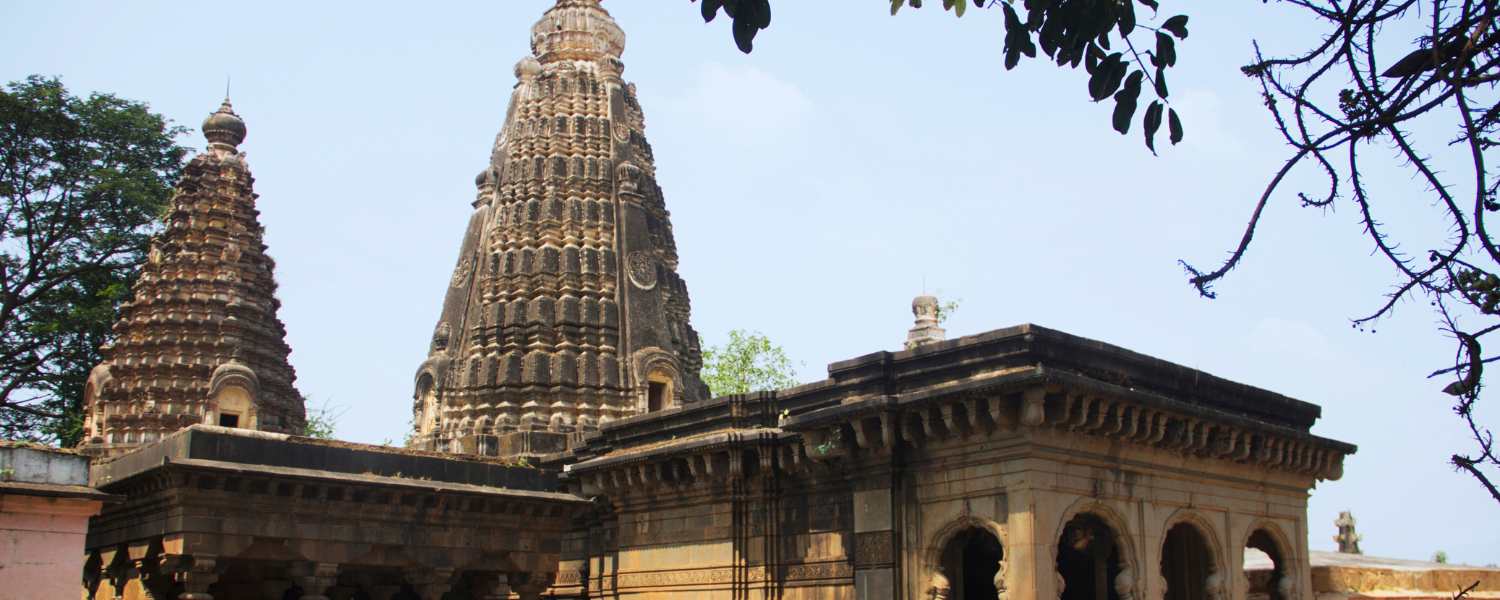
Mahalaxmi Temple in Kolhapur is a sacred abode of Goddess Mahalaxmi and a must-visit tourist Place in Maharashtra.
Dating back to the 7th century, the temple has undergone various renovations, resulting in a stunning amalgamation of Chalukyan, Rashtrakuta, and Maratha architectural styles.
The temple complex, adorned with intricately carved pillars and a golden Kalash, attracts devotees and tourists alike. The spiritual aura and the temple’s historical significance make it a revered destination during festivals and a tranquil retreat for those seeking divine solace.
Believed to be one of the Shakti Peethas, the Mahalaxmi Temple is considered a sacred abode of the goddess Mahalaxmi, who is revered as the bestower of wealth, prosperity, and well-being.
The Rathotsava, or chariot festival, celebrated with grandeur, highlights the temple’s annual festivities. During this event, the golden chariot is ceremoniously pulled by devotees through the streets of Kolhapur, marking a joyous celebration of the goddess’s divine presence.
Apart from its religious significance, the Mahalaxmi Temple is a prominent tourist attraction in Kolhapur. Visitors are captivated by the spiritual ambiance, the architectural marvels, and the cultural vibrancy surrounding the sacred precincts.
The temple actively engages with the community through social and cultural initiatives, contributing to the overall well-being and development of the region. Its influence extends beyond the spiritual realm, making it an integral part of Kolhapur’s social fabric.
With its divine aura and cultural resonance, Mahalaxmi Temple remains a beacon of spiritual solace and cultural heritage.
As devotees and tourists bow before the goddess’s grace, the temple is a timeless testament to Maharashtra’s deep-rooted spirituality and the enduring legacy of Mahalaxmi’s benevolence.
11. Bhimashankar Temple
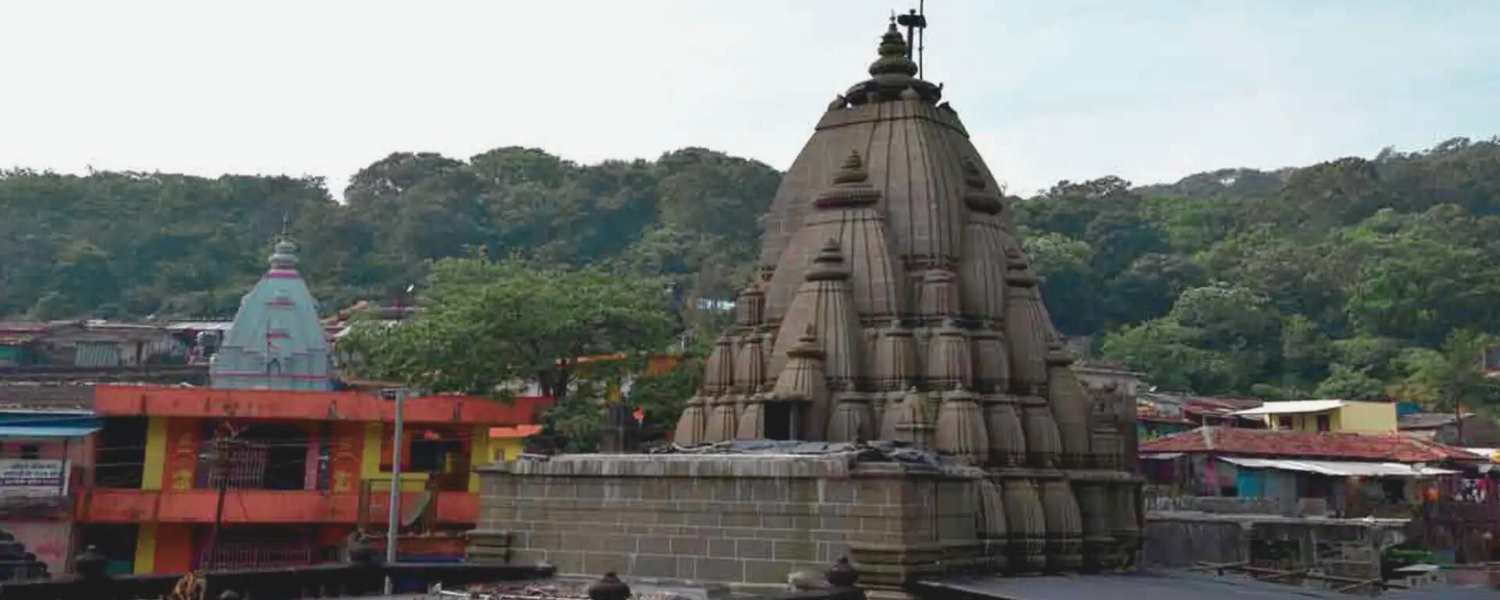
Bhimashankar Temple, one of the twelve Jyotirlingas, is in the Sahyadri range. Surrounded by greenery in the sanctuary bearing its name, the temple exudes a serene and mystical ambiance.
The temple’s architectural style and the region’s attractiveness create a harmonious blend of spiritual and natural splendour.
The Bhimashankar Wildlife Sanctuary surrounding the temple is home to various flora and fauna, adding an ecological dimension to the spiritual journey.
The trek to Bhimashankar Temple, amidst the pristine surroundings, is a pilgrimage and an adventure into the heart of Maharashtra’s natural and spiritual heritage.
Bhimashankar is not just a religious destination but also a biodiversity hotspot. The surrounding region is a haven for nature lovers and wildlife enthusiasts, with the Bhimashankar Wildlife Sanctuary being home to diverse flora and fauna, including the elusive Indian giant squirrel.
Perched at an elevation of approximately 3,250 feet in the Western Ghats, Bhimashankar Temple is surrounded by lush greenery and biodiversity.
The temple’s location amidst the Sahyadris adds to its spiritual ambiance, providing devotees with a serene setting for introspection and worship.
Beyond its religious allure, Bhimashankar Temple attracts tourists who seek a blend of spirituality and natural beauty.
The trekking trails, the cascading Bhima River, and the cool, mountainous air create an atmosphere that appeals to those looking for a holistic experience.
Bhimashankar Temple, with its divine resonance and natural charm, invites all who visit to partake in the spiritual energy that permeates the Sahyadris.
As the temple bells chime amidst the rustling leaves and the fragrance of incense mingles with the mountain air, Bhimashankar stands as a timeless sanctuary, beckoning devotees on a journey of inner reflection and devotion.
12. Matheran Hill Station
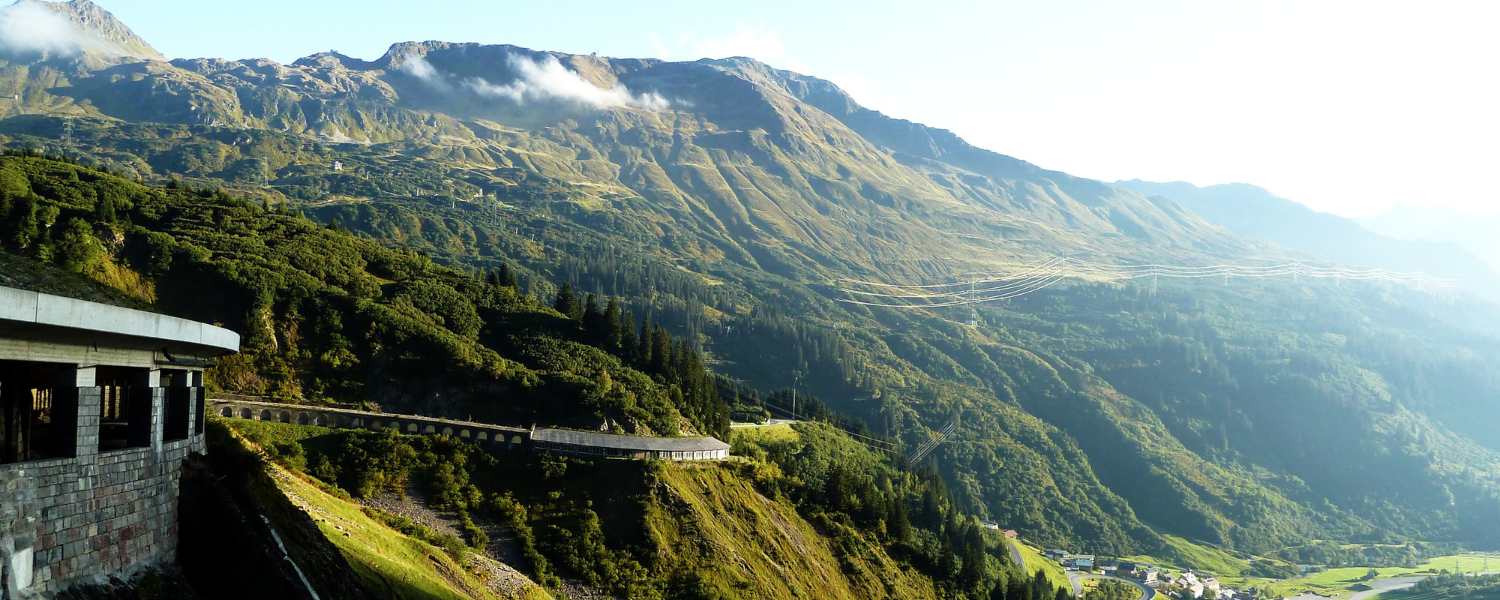
Matheran, Asia’s only automobile-free hill station, is a serene escape in the Western Ghats. Accessible by a scenic toy train or on horseback, Matheran transports visitors to a bygone era.
The hill station has lush greenery, breathtaking viewpoints, and colonial-era architecture. Charlotte Lake, Echo Point, and Louisa Point are among the must-visit attractions, offering panoramic views of the surrounding valleys and mountains.
Matheran is not just a hill station; it’s a journey back in time, providing a refreshing respite from the hustle and bustle of city life and a must-visit tourist place in Maharashtra.
Nestled amidst the hills, Charlotte Lake is a serene water reservoir that adds to Matheran’s natural charm. The lake is a perfect spot for a stroll or a quiet picnic, surrounded by lush greenery, and offers a tranquil atmosphere.
The Matheran Hill Railway, a UNESCO World Heritage Site, is a narrow-gauge heritage railway that connects Neral to Matheran. The toy train chugs through dense forests and steep slopes, offering a delightful journey reminiscent of a bygone era.
Matheran is not just about natural beauty; it also offers a glimpse into local culture through its handicrafts and cuisine.
Visitors can explore the marketplace for traditional artefacts and savour local delicacies that add a touch of authenticity to the experience.
With its timeless charm and serene landscapes, Matheran is a testament to the allure of simplicity and the rejuvenating power of nature.
As visitors traverse its winding trails and savour the unhurried pace of life, Matheran remains a timeless retreat where the soul reconnects with the essence of tranquillity amidst the Sahyadri hills.
13. Kaas Plateau
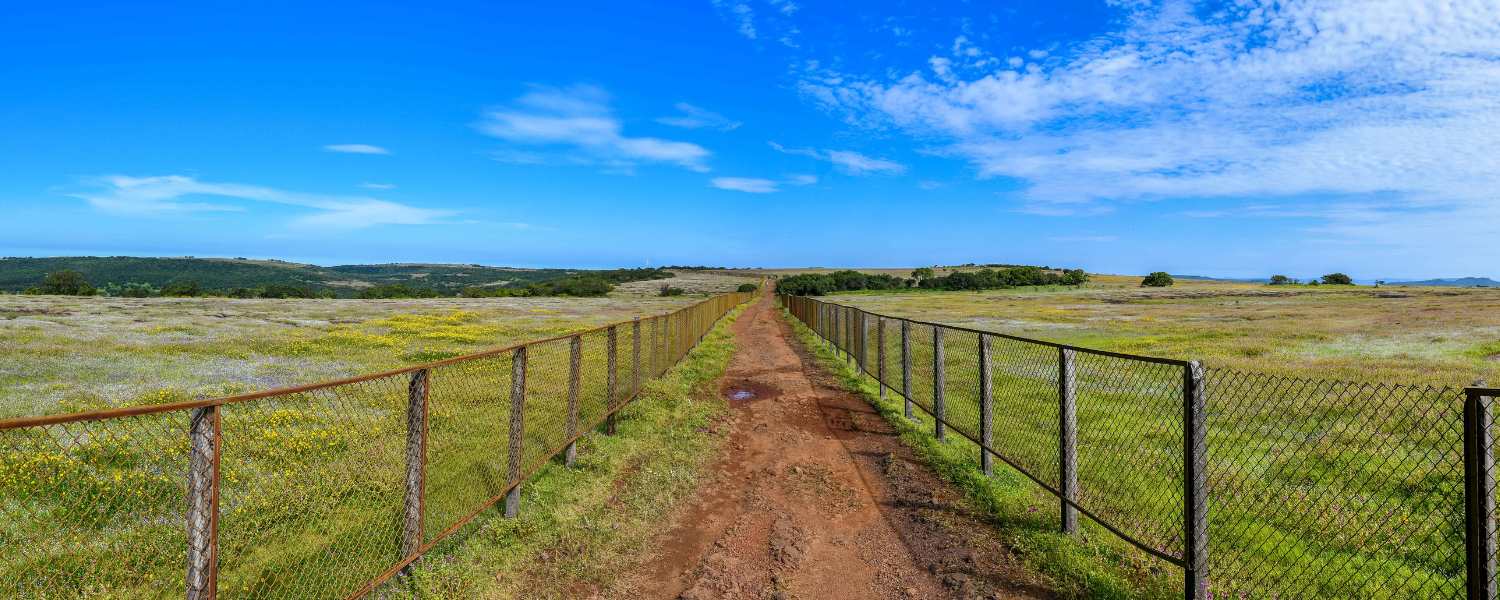
Situated near Satara, this high-altitude plateau transforms into a vibrant carpet of wildflowers during the monsoon season. Rare and endemic species of flora bloom, creating a spectacle of colours against the backdrop of the Sahyadri hills.
Blanketed in a riot of colours, the plateau becomes a living canvas, showcasing various wildflowers that carpet the landscape.
Kaas Plateau is a paradise for photographers seeking to capture the fleeting beauty of nature. The interplay of sunlight and shadows on the blooming flowers, coupled with the panoramic views of the Sahyadri mountains, offers countless opportunities for breathtaking shots.
To mitigate the impact of tourism on the fragile ecosystem, access to the Kaas Plateau is held, and only a small number of visitors are allowed at a time.
This controlled approach aims to balance showcasing the natural beauty and ensuring its long-term preservation.
Kaas Plateau, with its brief floral symphony, is a testament to the natural wonders Maharashtra harbours within its landscapes.
As visitors tread lightly upon this botanical marvel, Kaas Plateau continues to weave a tapestry of colours, inviting all who appreciate the beauty of nature to witness its fleeting yet enchanting spectacle.
14. Wilson Point, Mahabaleshwar

Wilson Point, also known as Sunrise Point, is the highest point in Mahabaleshwar, offering spectacular sunrise views. Three observation towers surround the viewpoint, providing panoramic vistas of the valleys below.
The lush greenery and the morning’s tranquillity make Wilson Point a serene spot to start the day. As the sun ascends, it bathes the landscape in hues of gold, creating a mesmerizing spectacle that captures the essence of Mahabaleshwar’s natural beauty.
Wilson Point is renowned for being one of the best spots in Mahabaleshwar to witness the sunrise. As the rays of sunlight kiss the horizon, the sky changes into a canvas of hues, painting a breathtaking panorama of orange, pink, and gold.
Visitors often gather early to witness this daily spectacle that promises a magical start to the day.
Visitors can explore the well-maintained walking pathways that lead to different vantage points on Wilson Point. The pathways are surrounded by lush vegetation, creating a peaceful place that completes the breathtaking views.
Wilson Point is easily accessible from Mahabaleshwar town, and tourists can reach the viewpoint either by a short drive or a leisurely walk. The convenience of access ensures that visitors can include Wilson Point in their itinerary without much effort.
Beyond its visual splendour, Wilson Point serves as a retreat for those seeking privacy and a connection with nature. The serene ambiance, coupled with the rhythmic sounds of the wind, creates a tranquil setting that allows visitors to unwind and rejuvenate.
As a testament to the natural beauty that graces Mahabaleshwar, Wilson Point stands as a symbol of scenic grandeur. Whether it’s the captivating sunrise, the panoramic vistas, or the tranquil atmosphere, this viewpoint invites all who visit to bask in the timeless allure of nature’s wonders.
15. Venna Lake, Mahabaleshwar

Venna Lake is a picturesque artificial lake in Mahabaleshwar surrounded by lush greenery and hills. It is a must-visit tourist Spot in Maharashtra. Boating on the calm waters of Venna Lake is a popular activity, offering a tranquil escape.
The lake is encircled by a walking path, horse rides, and food stalls, creating a recreational hub for visitors. Sunset Point near Venna Lake provides a breathtaking view of the sun setting behind the hills, adding romance to this destination.
One of the main attractions at Venna Lake is the boating experience it offers. Visitors can embark on boat rides across the lake’s serene waters, enjoying the gentle sway of the boat amidst the scenic beauty. Rowboats, paddleboats, and even small motorboats are available, providing a leisurely way to explore the lake.
Venna Lake caters to families with a designated children’s play area. The playground, equipped with swings and slides, ensures guests have their share of fun amidst the beauty, making it a location for families to spend quality time together.
Venna Lake is a year-round attraction, adding charm to the landscape each season. Whether it’s the blooming flowers in spring, the cool monsoon rains, the vibrant autumn foliage, or the crisp winter air, Venna Lake adapts its allure to the changing seasons.
Venna Lake, with its tranquil waters and surrounding beauty, stands as a testament to the serene charm that defines Mahabaleshwar.
As visitors immerse themselves in the lakeside tranquillity, Venna Lake remains a timeless retreat where nature’s beauty is reflected in the mirror-like waters, inviting all to experience a moment of lakeside serenity in the heart of the hills.
16. Amboli Ghat
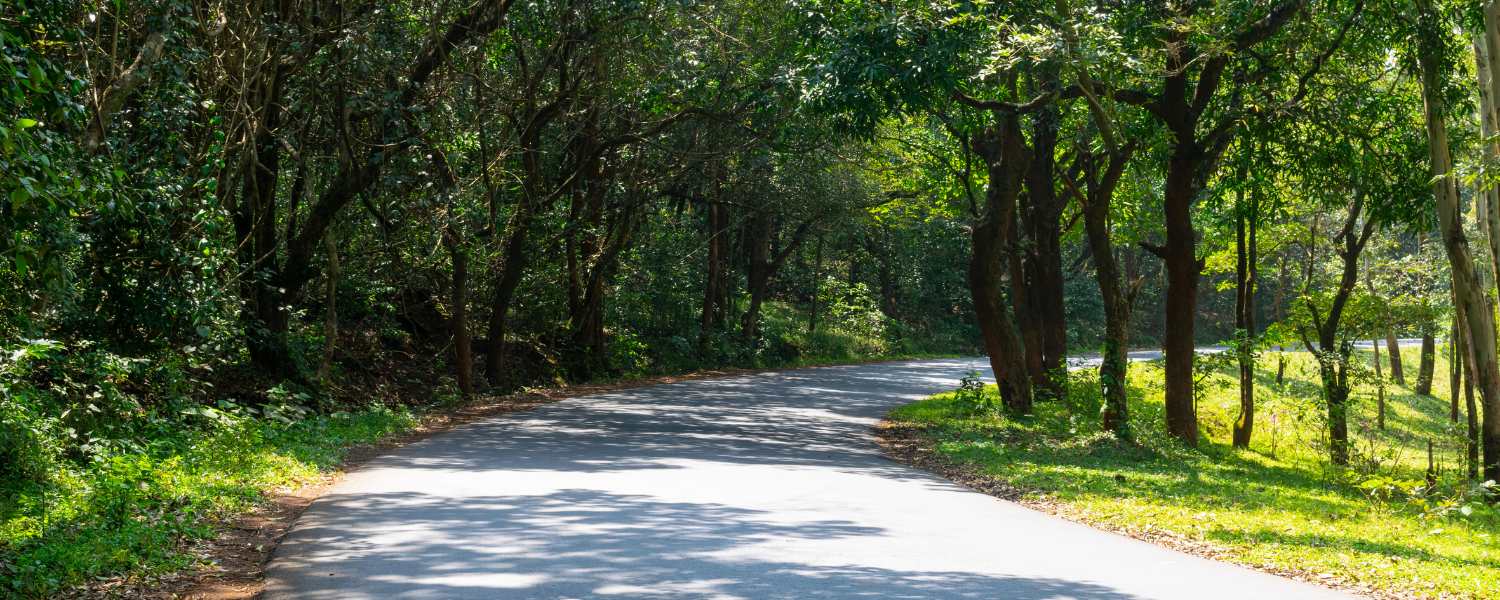
Amboli Ghat is a serene hill station in the Sahyadri Hills and a well-known Tourist Place in Maharashtra, renowned for its lush landscapes, cascading , and mist-covered valleys.
The region transforms into a haven during the monsoon, with fog-laden forests and numerous viewpoints offering breathtaking panoramas.
Amboli Ghat is a retreat for nature lovers and a gateway to the biodiversity-rich Amboli Wildlife Sanctuary. With its diverse flora and fauna, Amboli Ghat provides a refreshing escape into the lap of the Western Ghats.
Amboli Ghat is renowned for its misty landscapes, especially during the monsoon season. As the mist descends over the hills, it creates an ethereal ambiance, veiling the lush vegetation in a soft, dreamlike embrace.
The mist adds a touch of mystery to the surroundings, inviting visitors to explore the enchanting beauty hidden within.
Kavalesaad Point is known for its panoramic views of the Konkan coastline. The viewpoint is perched at a high altitude, allowing visitors to witness the undulating hills and the vast expanse of the Konkan region, creating a captivating scene that extends to the distant horizon.
While Amboli Ghat is enchanting throughout the year, winter unveils a different facet of its beauty. The crisp air, clear skies, and cooler temperatures make winter an ideal time to explore the hill station, providing a refreshing escape from the hustle and bustle of city life.
Amboli Ghat, with its misty allure and natural wonders, stands as a testament to the timeless beauty of the Western Ghats.
As visitors traverse its winding trails and embrace the serenity of its landscapes, Amboli Ghat continues to be a cherished gateway to the enchanting realms of biodiversity, waterfalls, and mist-laden hills in the heart of Maharashtra’s Western Ghats.
17. Panchgani

Panchgani, situated amidst five hills, is a charming hill station known for its climate and scenic beauty. The Table Land, one of Asia’s highest volcanic plateaus, offers panoramic views of the surrounding hills and valleys.
Strawberry farms, colonial-era bungalows, and viewpoints like Sydney Point and Parsi Point add to the allure of Panchgani.
Panchgani is renowned for its vast tableland, one of the largest in Asia. The expansive plateau offers panoramic views of the surrounding hills and valleys.
Visitors traverse the plateau and are treated to a visual feast, with the Deccan Plateau extending to the horizon on one side and the Krishna Valley on the other.
Just a short distance from Panchgani, the Rajpuri Caves are a spiritual and historical site. The caves are associated with Lord Kartikeya, the son of Lord Shiva, and feature a temple dedicated to the deity. The complex also includes water kunds (tanks) that are considered sacred.
Panchgani’s marketplace is a vibrant hub where visitors can explore local handicrafts, artefacts, and souvenirs. The town’s eateries offer a taste of local cuisine, allowing visitors to savour the region’s flavours.
Panchgani enjoys a moderate climate throughout the year, making it an attractive destination in all seasons. The cool temperatures, especially in the evenings, provide a pleasant retreat from the heat of the plains.
With its plateaus, panoramic views, and natural wonders, Panchgani stands as a testament to the enduring allure of the Western Ghats.
As visitors immerse themselves in the tranquillity of its landscapes, Panchgani continues to be a cherished destination where time seems to slow down, allowing all who visit to savour the beauty of this hill station nestled in the heart of nature’s grandeur.
18. Tapola (Mini Kashmir)

Tapola, often called Mini Kashmir, is a tranquil hamlet near Mahabaleshwar and a popular tourist Place in Maharashtra.
Nestled along the banks of the Shivsagar Lake, Tapola is surrounded by dense forests and hills. The vast expanse of the lake, water sports, and scenic beauty earned Tapola its nickname.
Visitors can embark on a boat ride, explore the Kaas Plateau nearby, and savour the tranquillity of this lesser-explored gem in the Sahyadris.
Tapola’s local cuisine reflects the flavours of the region. Visitors can savour traditional Maharashtrian dishes and local specialities, adding a gastronomic dimension to their exploration of Mini Kashmir.
Tapola, or Mini Kashmir, with its pristine lake, lush landscapes, and immersive experiences, stands as a testament to the unspoiled beauty of the Western Ghats.
As visitors explore its shores, trek through its forests, and witness the convergence of rivers, Tapola is a cherished place where the charm of nature unfolds in every vista, inviting all who venture there to connect with the timeless charm of this hidden paradise.
19. Kalsubai Peak

Kalsubai Peak, the highest peak in the Western Ghats, is a trekker’s paradise tourist place in Maharashtra. Located in the Ahmednagar district, the trek to Kalsubai offers panoramic views of the surrounding peaks and valleys.
The trek, marked by diverse landscapes, challenges the adventurers and rewards them with a sense of accomplishment at the summit.
Aspiring trekkers should be well-prepared with essentials such as comfortable trekking shoes, adequate water, snacks, a first aid kit, and weather-appropriate clothing. It’s advisable to check weather conditions and plan the trek accordingly.
Kalsubai Peak, with its challenging ascent and awe-inspiring views, stands as a testament to the adventurous spirit and natural beauty that define the Western Ghats.
As trekkers conquer the summit, they achieve a physical feat and gain a profound connection with the rugged landscapes and the sense of accomplishment that comes with scaling Maharashtra’s highest peak.
20. Tamhini Ghat
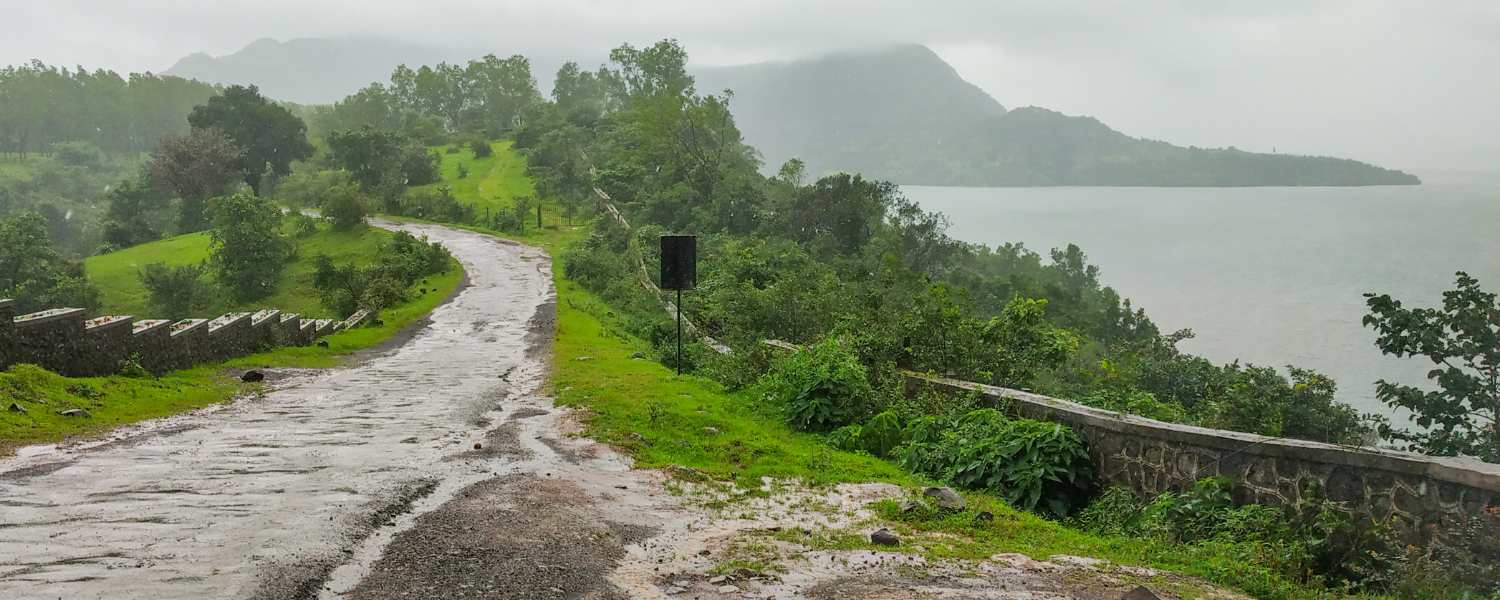
Tamhini Ghat, a scenic mountain pass in the Western Ghats, comes alive during the monsoon season. The ghat is adorned with lush greenery, waterfalls of Maharashtra, and mist-covered hills, creating a mesmerizing tableau.
Tamhini Ghat is a favoured route for those travelling from Pune to the Konkan region, offering a refreshing respite from the heat and urban monotony.
Tamhini Ghat is renowned for its breathtaking landscapes that change with the seasons. The drive takes travellers through dense forests, rolling hills, and meandering rivers, providing a visual feast at every turn. The lush green expanses, especially during the monsoon, transform Tamhini Ghat into a verdant paradise.
Tamhini Ghat is adorned with numerous waterfalls that adorn the hillsides. As travellers navigate the winding roads, they may encounter these natural wonders, some visible from a distance, while others require a short detour for a closer view. The sight of water gushing down the rocks adds to the allure of the journey.
21. Bhandardara
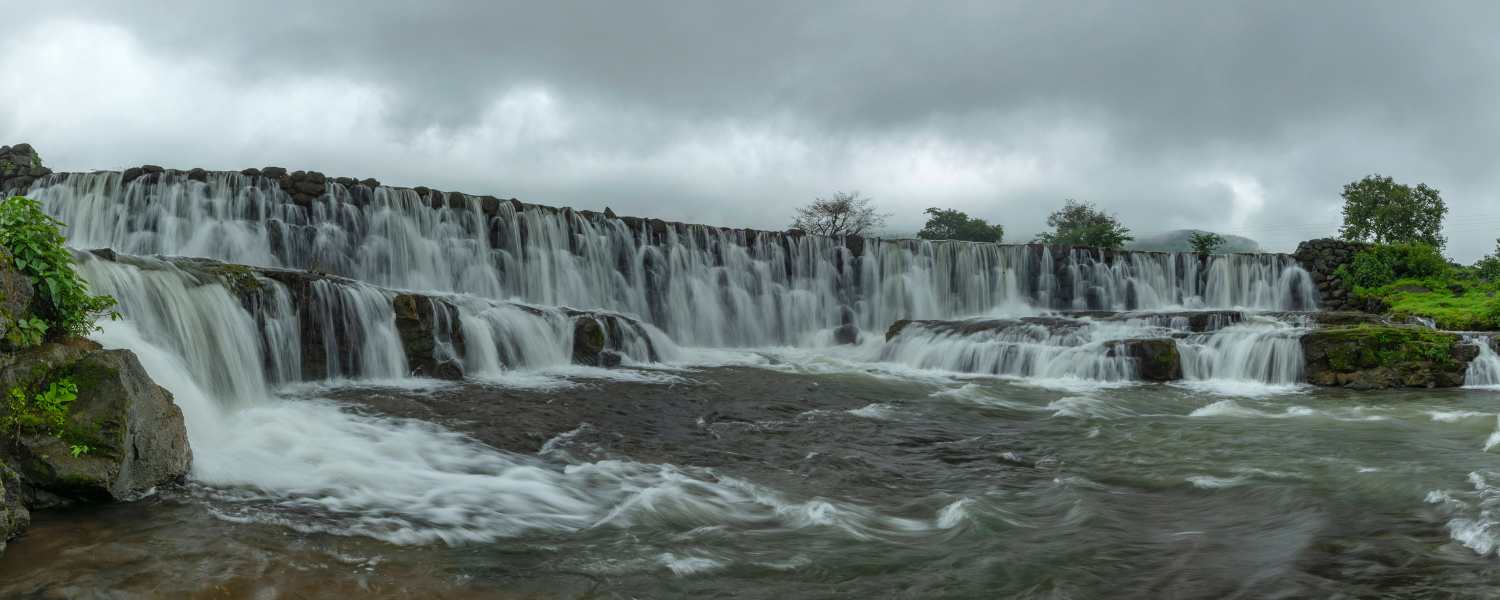
Bhandardara, in the Sahyadris, is a new hill station known for its lakes, temples, and lush landscapes. The Arthur Lake, surrounded by hills and valleys, provides a serene backdrop.
The Randha Falls, Umbrella Falls, and the Wilson Dam are among the natural attractions that add to the charm of Bhandardara.
The region is also steeped in history, with the Amruteshwar Temple and Ratangad Fort standing as cultural landmarks amidst the scenic beauty.
Bhandardara is a haven for nature lovers, adventure enthusiasts, and those seeking a retreat into the lap of the Western Ghats.
Historical forts surround Bhandardara, and Ratangad Fort is a sentinel overlooking the region. The trek to Ratangad Fort offers a physical challenge and panoramic views of the Sahyadris and the surrounding landscape. The fort’s ruins narrate tales of bygone eras, adding a touch of mystique to the trek.
Travel Tips
1. Wear comfortable trekking shoes and carry essentials like water, snacks, and a first aid kit for outdoor activities.
2. Respect the local culture and natural surroundings while exploring historical sites and trekking trails.
Bhandardara, with its natural wonders and historical treasures, is a testament to the serene beauty of the Sahyadri Range.
As travellers explore its landscapes, trek through ancient forts, and witness the cascading waterfalls, Bhandardara is a nature retreat that invites all who visit to embrace the tranquillity and charm of this Sahyadri gem.
22. Trimbakeshwar Temple, Nashik
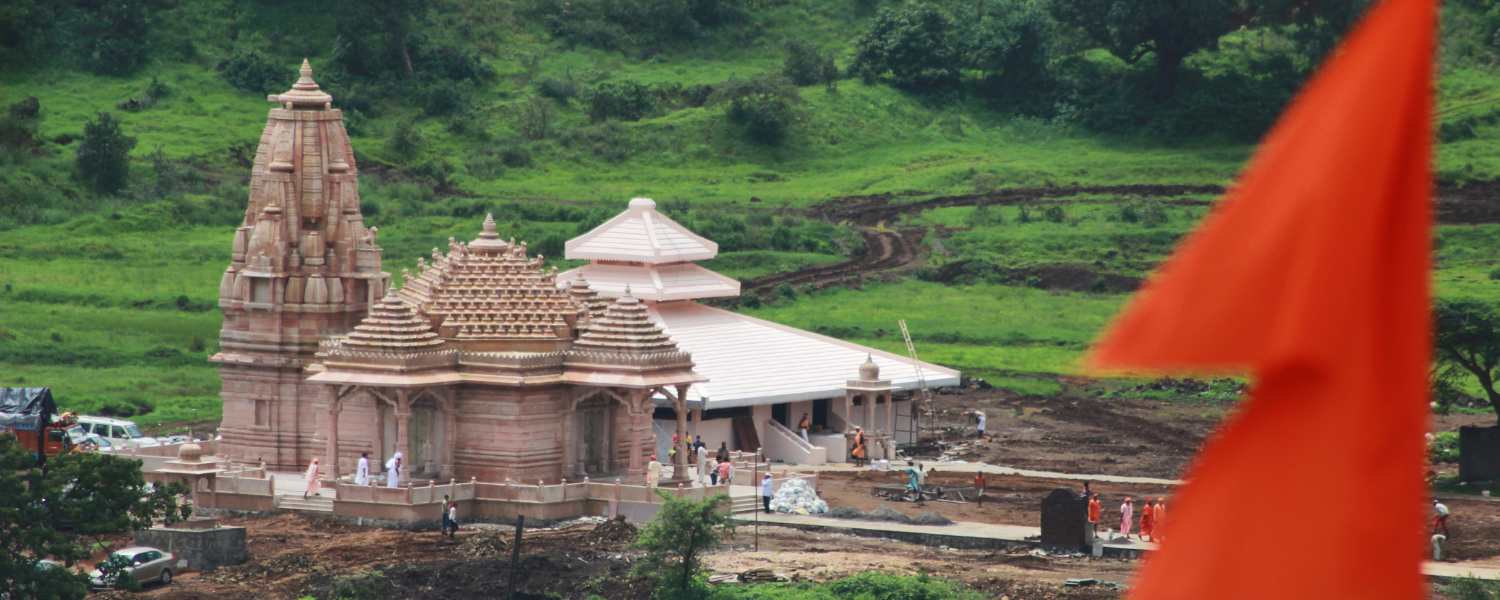
Trimbakeshwar Temple, nestled in the scenic surroundings of Nashik, is one of the twelve Jyotirlingas dedicated to Lord Shiva. The temple holds immense spiritual significance as it marks the source of the Godavari River.
The intricate architecture and the sanctity of the Jyotirlinga draw devotees from far and wide. Surrounded by lush greenery and the Brahmagiri mountain range, Trimbakeshwar Temple offers a spiritual retreat and a connection with the divine amidst the natural beauty of Nashik.
Adjacent to the temple is the sacred Kushavarta Kund, believed to be the source of the Godavari River. Pilgrims perform rituals and take a holy dip in the Kund, which is considered auspicious and purifying.
The Kushavarta Kund becomes particularly significant during the Kumbh Mela, attracting millions of devotees seeking spiritual cleansing.
Best Time to Visit
While Trimbakeshwar Temple is accessible throughout the year, which is why it is a popular tourist Place in Maharashtra; the months of Shravan (July-August) and during the Nashik Kumbh Mela witness heightened spiritual activities and are considered auspicious for devotees.
Trimbakeshwar Temple, with its spiritual resonance, architectural grandeur, and association with the sacred Godavari, stands as a beacon of divinity in the heart of Nashik. As pilgrims and visitors alike bow their heads in reverence,
23. Siddhivinayak Temple, Mumbai

Situated in Prabhadevi, this iconic temple attracts millions of devotees annually. The temple’s architecture blends traditional and modern elements, and the sanctum houses Lord Ganesha’s swayambhu (self-manifested) idol.
The vibrant atmosphere, holy zeal, and unique idol make Siddhivinayak a cultural and spiritual landmark in the heart of Mumbai.
The temple’s exterior is adorned with carvings and embellishments, while the golden dome crowning the sanctum adds a touch of luxury.
The sanctorum houses the idol of Lord Ganesha, crafted from a single black stone, captivating devotees with its divine presence.
Siddhivinayak Temple is integral to Mumbai’s cultural tapestry, reflecting the city’s dynamic blend of tradition and modernity.
The temple’s iconic status makes it a must-visit landmark for locals and visitors, offering a glimpse into Mumbai’s spiritual ethos.
Best Time to Visit
While Siddhivinayak Temple is open throughout the year, visitors may want to plan their visit during festivals or on auspicious days for a more vibrant and spiritually charged experience.
24. Pandharpur (Vitthal Rukmini Temple)
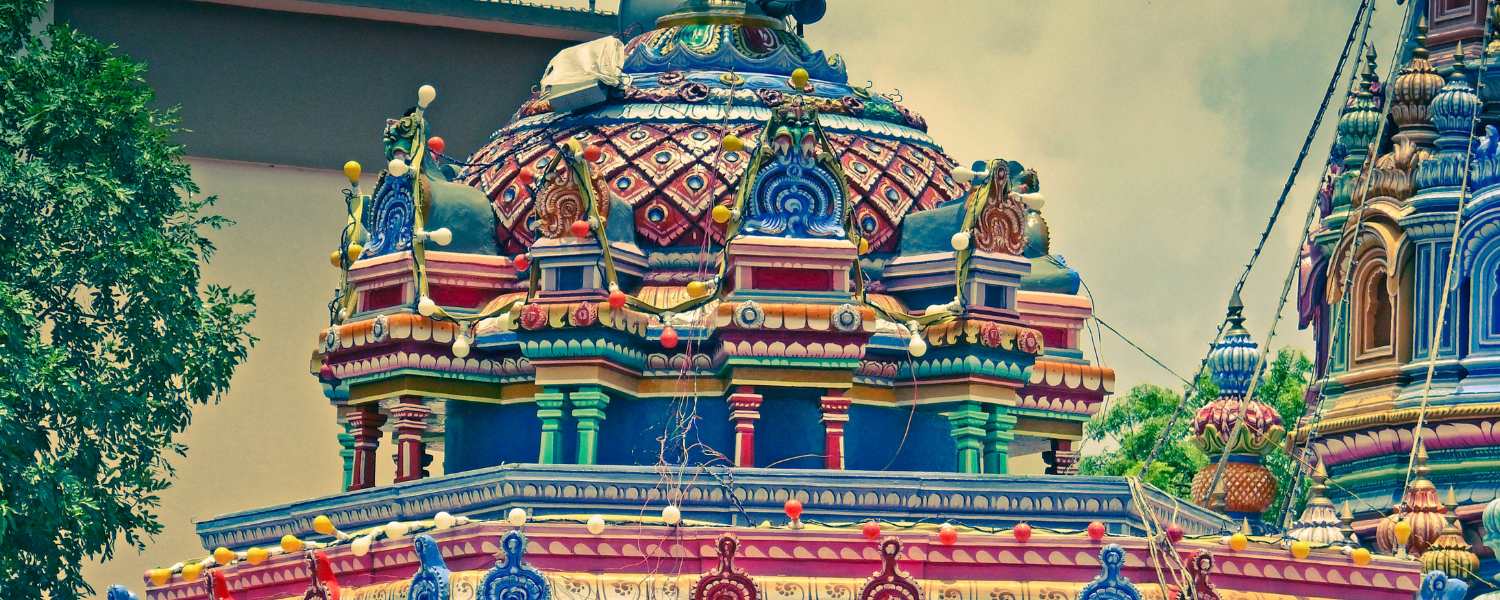
On the banks of the Chandrabhaga River is a sacred town known for the Vitthal Rukmini Temple. Dedicated to Lord Vitthal, an incarnation of Lord Krishna, the temple is a major site.
The annual Wari procession, where devotees undertake a 21-day journey to Pandharpur, celebrates faith and devotion.
The temple’s architecture, the spiritual ambiance, and the rhythmic chants of the devotees create an immersive experience that resonates with the spiritual heritage of Maharashtra.
Best Time to Visit
While Pandharpur welcomes devotees throughout the year, the festivals of Ashadhi Ekadashi and Kartiki Ekadashi witness heightened spiritual activities, making these periods particularly promising for a visit.
Pandharpur, with its ancient temples, holy river, and the resonance of devotional fervour, stands as a timeless testament to Maharashtra’s enduring faith and cultural richness.
As pilgrims bow in reverence and embark on the sacred journey to Pandharpur, the town continues to be a beacon of spiritual awakening and divine grace.
25. Jejuri (Khandoba Temple)
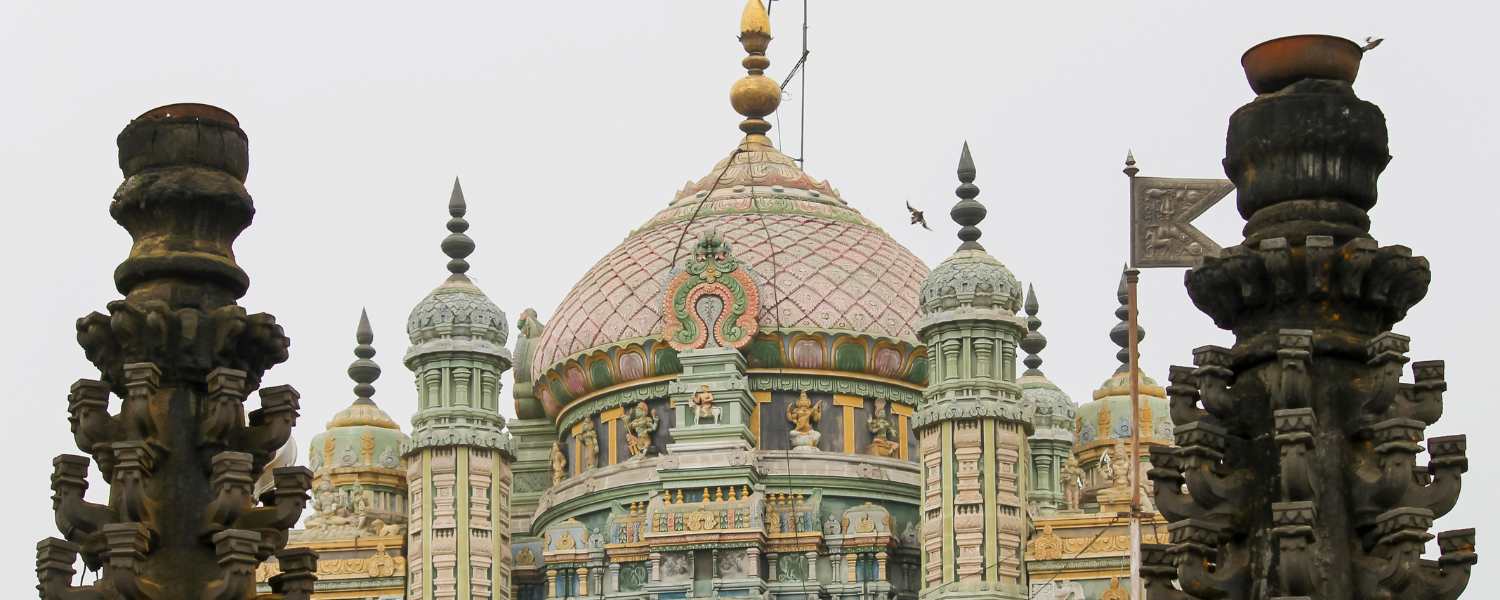
Jejuri, home to the Khandoba Temple, is steeped in mythology and devotion. The temple is dedicated to Khandoba, a form of Lord Shiva, worshipped as the ‘God of Jejuri.’ Perched atop a hill, the temple offers panoramic views of the surrounding landscape.
The unique aspect of the temple lies in the sea of yellow turmeric that envelops the shrine and devotees during the annual Bhandara festival.
Jejuri is not only a spiritual destination, but also a cultural spectacle that showcases the vibrant traditions of Maharashtra and is a must-visit tourist Place in Maharashtra.
Best Time to Visit
While Jejuri welcomes devotees throughout the year, the Turmeric Festival (Bhandara) and Champa Shashti are particularly promising and attract many pilgrims.
Jejuri, with its vibrant traditions, spiritual hunger, and historical echoes, stands as a testament to Maharashtra’s cultural richness.
As devotees ascend the hills, offer turmeric to Lord Khandoba, and immerse themselves in the town’s sacred aura, Jejuri remains a pilgrimage site that weaves together the threads of devotion and cultural heritage.
26. Hazur Sahib Nanded
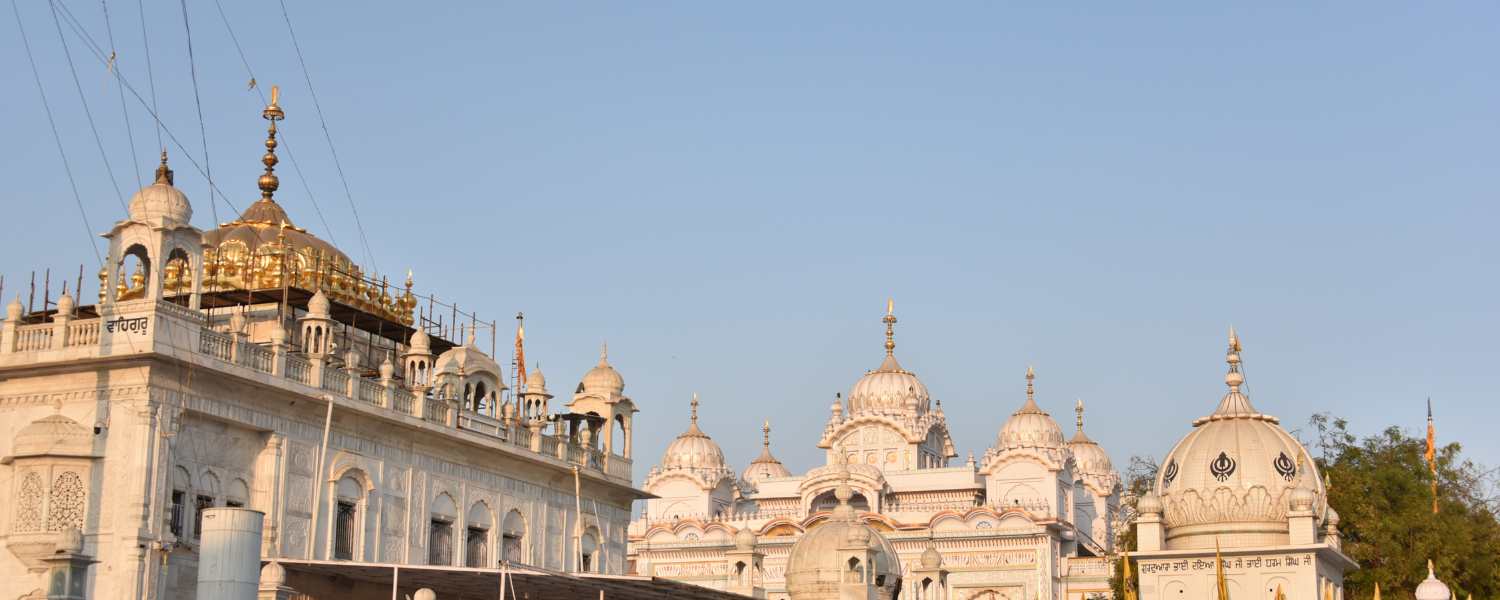
Hazur Sahib Nanded, one of the holiest sites in Sikhism, is a gurudwara that marks where Guru Gobind Singh Ji, the tenth Sikh Guru, left his earthly form.
The gurudwara, located on the banks of the Godavari River, attracts Sikh pilgrims worldwide. The spiritual ambiance, the Akhand Path, and the Langar (community kitchen) reflect the Sikh principles of service, devotion, and equality.
Best Time to Visit
Hazur Sahib can be visited yearly, but Gurpurabs and festive occasions draw larger crowds.
Hazur Sahib Nanded, with its spiritual resonance and historical heritage, remains a sanctified destination where Sikhs connect with their faith and pay homage to the eternal Guru.
As pilgrims bow before the Takht Sahib and immerse themselves in the divine atmosphere, the Hazur Sahib remains a beacon of Sikh spirituality and unity.
27. Dagdusheth Halwai Ganpati, Pune
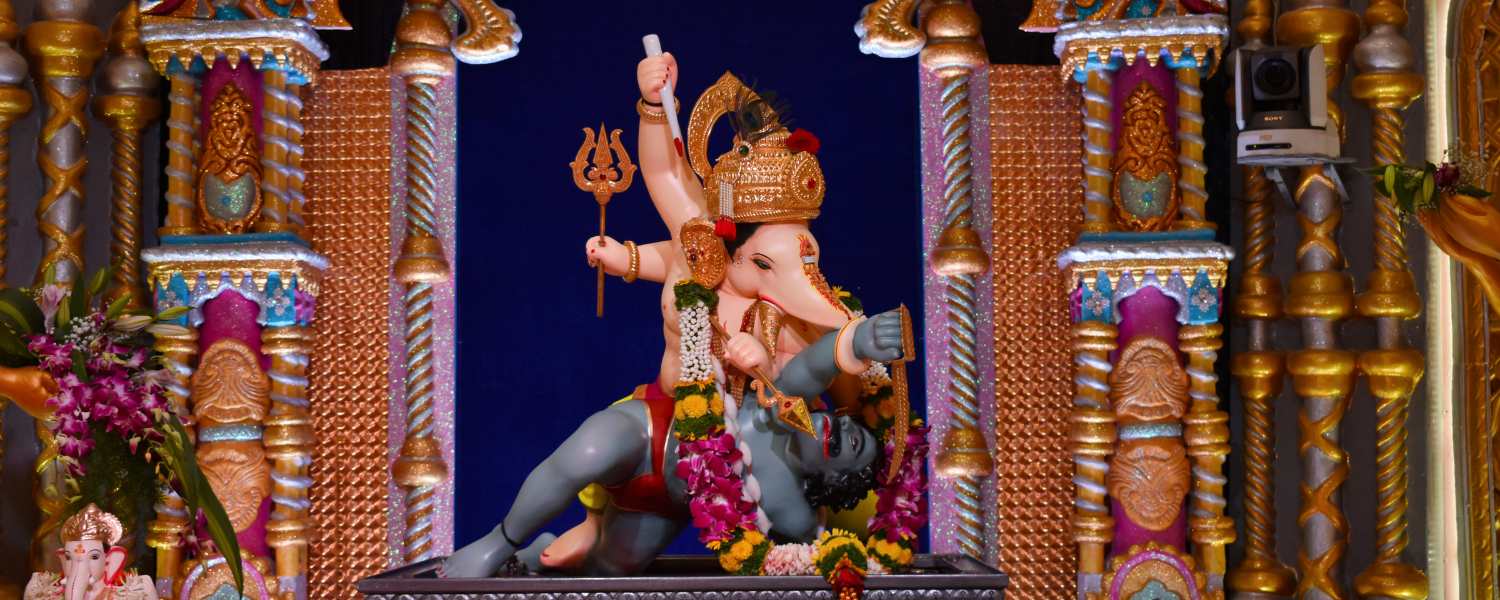
Dagdusheth Halwai Ganpati Temple in Pune is a prominent and revered temple dedicated to Lord Ganesha. Established by the sweet merchant Dagdusheth Halwai, the temple is known for its grandeur and the imposing gold-plated idol of Lord Ganesha.
Devotees throng the temple, especially during Ganesh Chaturthi, to seek the blessings of the Elephant-headed God. The vibrant festivities, cultural programs, and charitable initiatives associated with the temple make it a focal point of devotion and community engagement in Pune.
Best Time to Visit
While the Dagdusheth Halwai Ganpati Temple is accessible throughout the year, Ganesh Chaturthi is a particularly auspicious time to witness the grandeur and festive spirit of the temple.
The Dagdusheth Halwai Ganpati Temple, with its rich history, cultural significance, and philanthropic endeavours, stands as a beacon of devotion and community service in Pune.
As they pursue the blessings of Lord Ganesha, the temple continues to be a sacred haven that resonates with the spiritual heartbeat of the city.
28. Shirdi Sai Baba Temple

The temple complex includes the Samadhi Mandir, where the mortal remains of Sai Baba are enshrined. Pilgrims from diverse backgrounds visit Shirdi to experience the spiritual aura, participate in prayer sessions, and partake in the distribution of Prasad (blessed food).
Shirdi, a town in Ahmednagar district, is synonymous with faith, miracles, and the teachings of Sai Baba, who is revered as a universal spiritual figure.
Best Time to Visit
While Shirdi attracts devotees throughout the year, the festivals and anniversaries associated with Sai Baba, such as Guru Purnima and Sai Baba’s Punyatithi, witness heightened spiritual activities.
The Shirdi Sai Baba Temple stands not just as a physical structure but as a spiritual haven where devotees find solace, inspiration, and a deep connection with the teachings of Sai Baba.
As pilgrims bow in reverence and offer their prayers, the temple continues to be a timeless symbol of faith, compassion, and the enduring legacy of a saint whose teachings transcend the boundaries of time and religion.
29. Grishneshwar Jyotirlinga
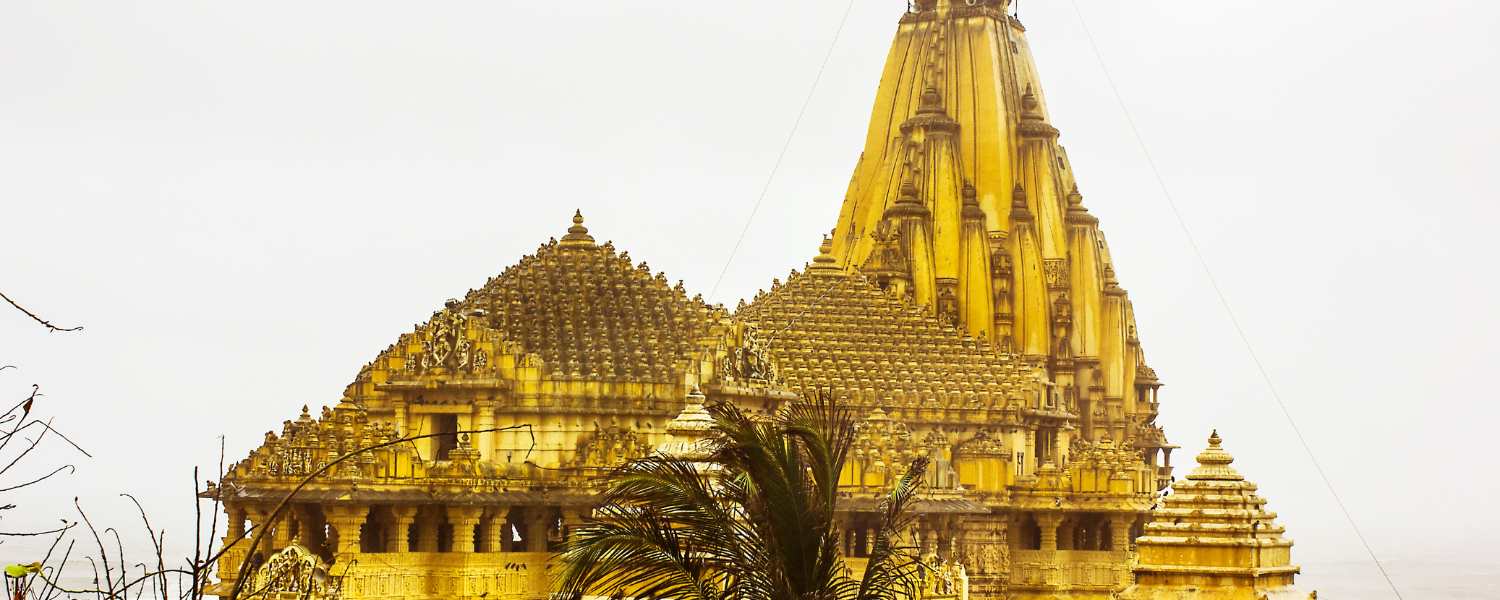
As one of the twelve Jyotirlingas, it holds immense religious significance. The temple’s architecture, with its intricately carved walls and spire, reflects the ancient craftsmanship of the region.
Devotees believe that worshipping at Grishneshwar Jyotirlinga brings spiritual blessings and fulfilment of desires. The temple, surrounded by the aura of devotion and the historical ambiance of Ellora, offers a profound spiritual experience in the heart of Maharashtra.
Best Time to Visit
While Grishneshwar Jyotirlinga is open for devotees throughout the year, festivals and auspicious occasions, especially Maha Shivaratri, attract a significant influx of pilgrims.
As pilgrims bow before the divine presence of Grishneshwar Jyotirlinga, the temple continues to stand as a beacon of spiritual enlightenment, inviting all who seek the eternal blessings of Lord Shiva to immerse themselves in the sacred energy of this revered Jyotirlinga.
30. Tadoba Andhari Tiger Reserve
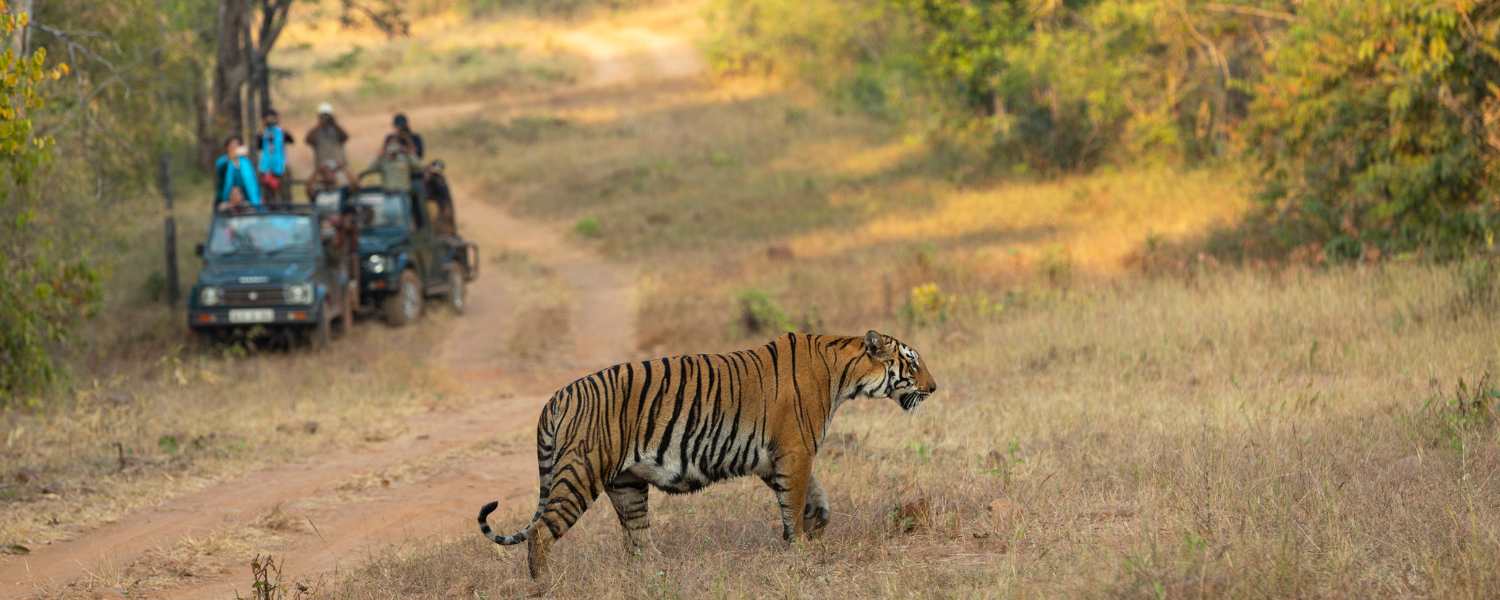
Tadoba Andhari Tiger Reserve in Chandrapur district is Maharashtra’s oldest and largest national park and a big tourist Spot. Renowned for its rich biodiversity and high tiger density, Tadoba is a haven for wildlife enthusiasts.
The park’s diverse landscapes, dense forests, meadows, and water bodies provide a conducive habitat for various flora and fauna. The Tadoba Lake and the iconic Tadoba Fort add a historical and scenic dimension to the reserve.
Best Time to Visit
The ideal time to visit Tadoba Andhari Tiger Reserve is during the dry winter months from November to March, when the weather wildlife sightings are more frequent.
As visitors traverse the trails of Tadoba Andhari Tiger Reserve, they become part of a larger narrative—one that celebrates the harmonious coexistence of humans and wildlife.
Tadoba’s pristine landscapes, vibrant biodiversity, and conservation commitment make it a sanctuary for animals and a living testament to the splendours of the natural world.
31. Pench National Park

Pench National Park is a vital wildlife corridor, straddling the border between Maharashtra and Madhya Pradesh. Inspired by Rudyard Kipling’s ‘The Jungle Book,’ Pench is known for its teak forests, open grasslands, and the meandering Pench River. The park is home to a thriving population of tigers, leopards, and various bird species.
Best Time to Visit
The best time to visit Pench National Park is when wildlife sightings are more frequent and the weather is pleasant.
As visitors traverse the trails of Pench National Park, they step into a realm where nature reigns supreme, untamed, and awe-inspiring.
The park’s commitment to conservation, coupled with its breathtaking landscapes, makes it a sanctuary not just for wildlife but for preserving the untamed spirit of the natural world.
32. Bhimashankar Wildlife Sanctuary
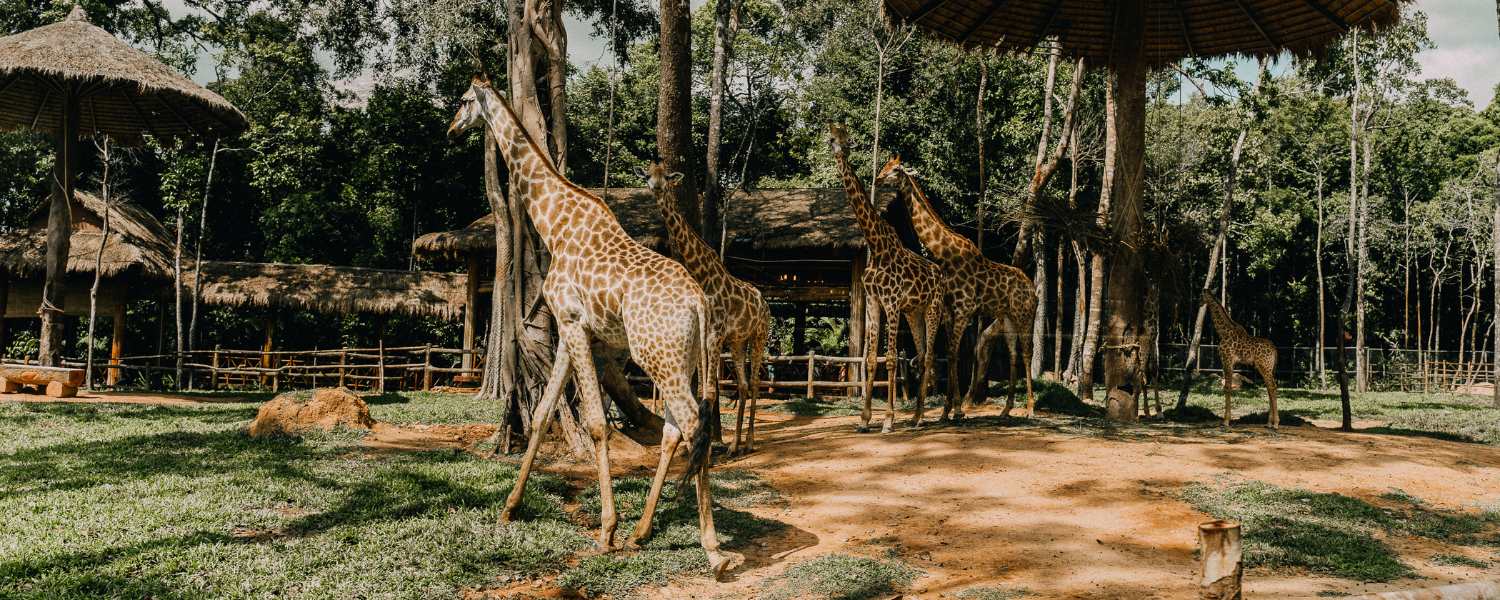
Bhimashankar Wildlife Sanctuary in Pune district is renowned for its biodiversity and the sacred Bhimashankar Temple.
The sanctuary, part of the Western Ghats, is a crucial habitat for the Indian giant squirrel and numerous bird species. The sanctuary also serves as the source of the Bhima River, adding ecological significance to its natural charm.
Visitors traverse the pathways of Bhimashankar Wildlife Sanctuary and embark on a journey into a realm where spirituality and biodiversity coalesce.
The sanctuary’s harmonious blend of natural wonders and cultural significance is a testament to the delicate balance between the sacred and the untamed.
33. Karnala Bird Sanctuary
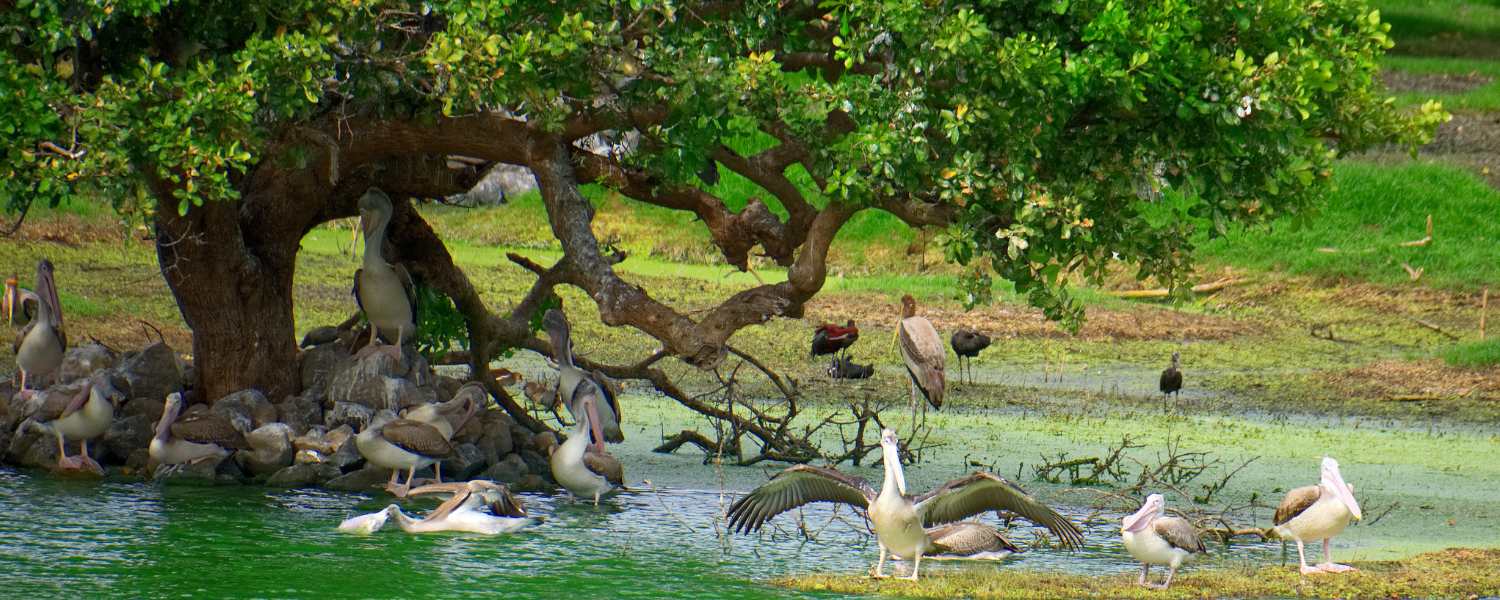
Karnala Bird Sanctuary near Panvel is a paradise for bird watchers and nature lovers. The sanctuary is dominated by the historic Karnala Fort and surrounded by lush greenery.
The diverse avian population, including resident and migratory birds, makes Karnala a sought-after destination for ornithologists. The trek to Karnala Fort offers a historical journey and panoramic views of the Western Ghats.
34. Radhanagari Wildlife Sanctuary
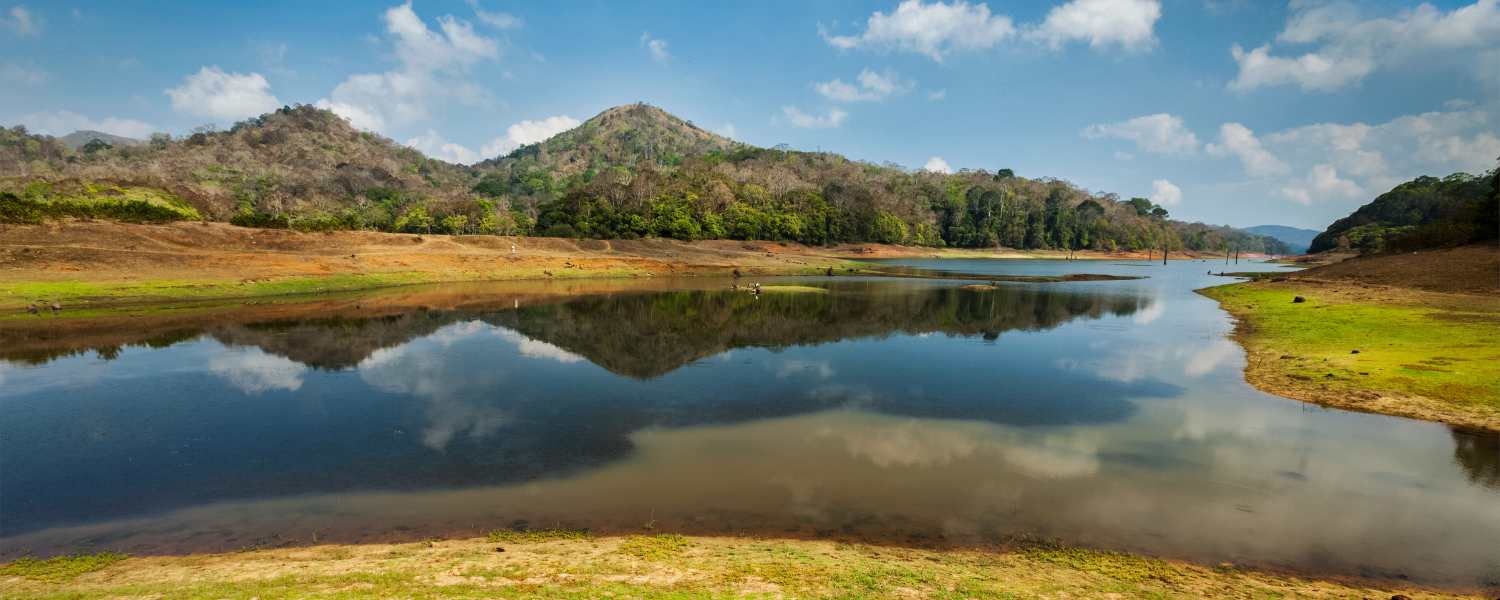
Radhanagari Wildlife Sanctuary, located in Kolhapur district, is known for its dense evergreen forests and pristine landscapes. The sanctuary is home to the endangered Indian bison (gaur), deer, leopards, and diverse bird species.
The iconic Dajipur Bison Sanctuary is part of Radhanagari, offering a unique opportunity to observe these majestic animals in their natural habitat.
35. Chandoli National Park

Chandoli National Park, situated in the Sahyadri range, is a biodiversity hotspot & popular tourist place in Maharashtra.
The place is known for its forests, waterfalls, flora, and fauna for nature enthusiasts. The endangered Indian leopard, sloth bear, and various species of deer find refuge in the park.
36. Bhigwan Bird Sanctuary
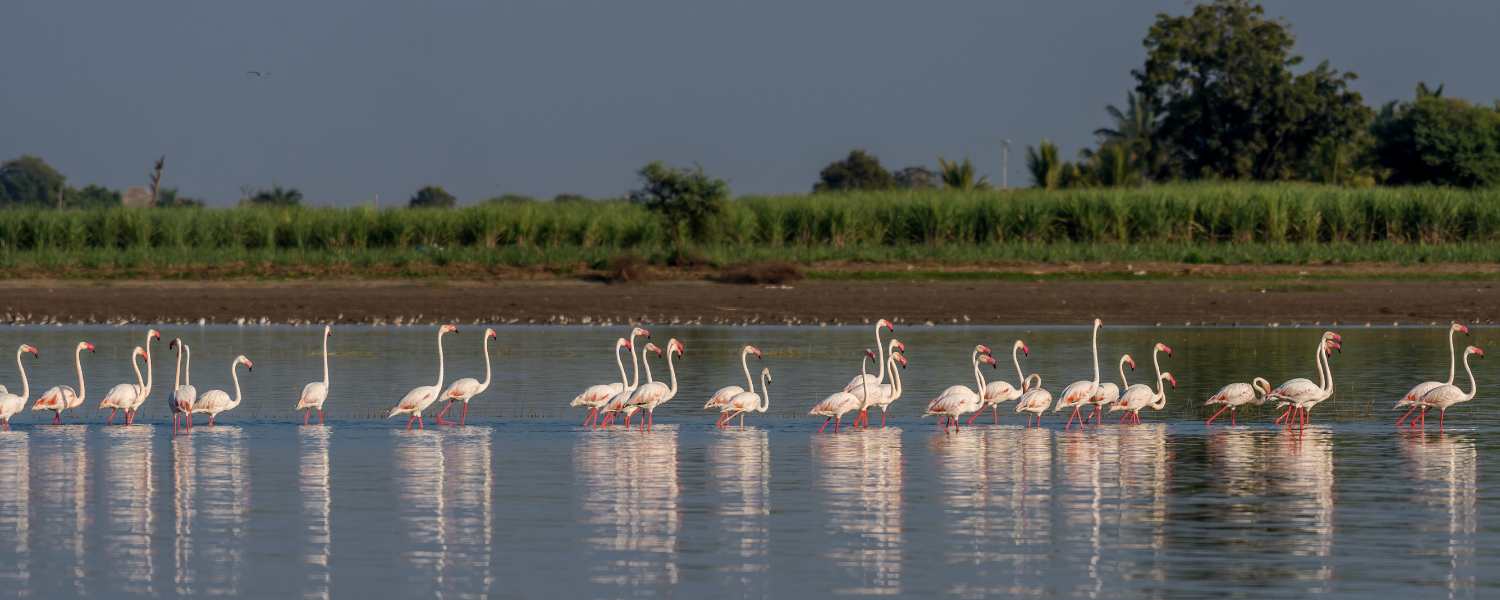
Bhigwan Bird Sanctuary near Pune is a haven for bird watchers, especially during winter. Ujani Dam’s backwaters attract many migratory birds, including flamingos, painted storks, and ibises.
The sanctuary’s serene ambiance, coupled with the vibrant hues of the visiting birds, creates a picturesque setting for photography and nature appreciation.
The prime time to visit Bhigwan Bird Sanctuary is during winter, from November to February, when migratory birds flock to the serene waters, creating a birdwatcher’s paradise.
37. Koyna Wildlife Sanctuary
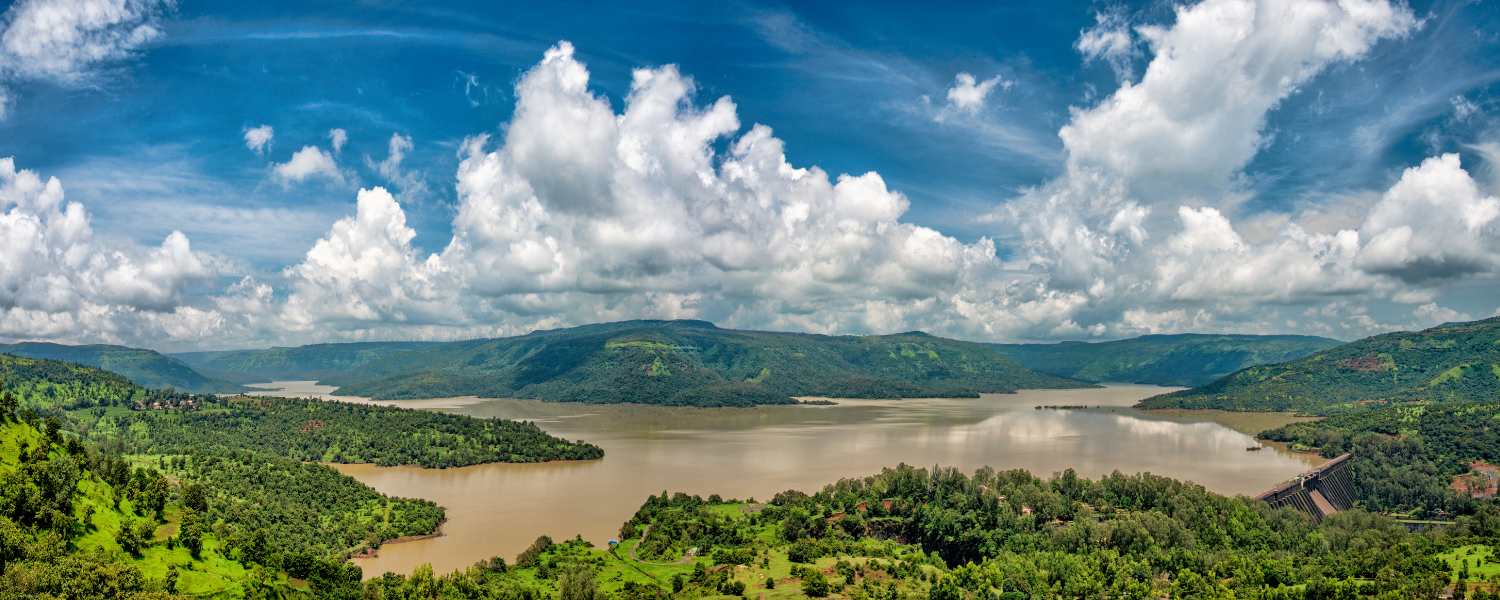
Koyna Wildlife Sanctuary, in the Western Ghats, is known for its diverse ecosystems and the Koyna Dam. The sanctuary is home to the Indian bison, Bengal tiger, and various reptiles and bird species.
The backwaters of the Koyna Dam add to the scenic beauty, making it a unique destination where wildlife thrives alongside human-engineered landscapes.
38. Dajipur Bison Sanctuary

Dajipur Bison Sanctuary, an integral part of Radhanagari Wildlife Sanctuary, conserves Indian bison (gaur). The sanctuary, located in the Kolhapur district, provides a natural habitat for these majestic animals, allowing visitors to witness them in their element.
Dajipur, with its dense forests and vibrant wildlife, offers a retreat for those seeking an immersive natural experience.
Explore Dajipur Bison Sanctuary between October and March to witness the thriving wildlife and lush landscapes, as the weather remains cool and comfortable during these months.
39. Nagzira Wildlife Sanctuary

Nagzira Wildlife Sanctuary, situated in the Gondia district, is a lesser-explored gem known for its rich biodiversity. The sanctuary is home to tigers, leopards, deer, and various bird species.
The picturesque landscapes, with a central lake surrounded by hills, add to the charm of Nagzira. The sanctuary’s serene ambiance and relatively untouched wilderness make it a captivating destination for wildlife enthusiasts.
The optimal time to explore Nagzira Wildlife Sanctuary is during the winter months, from October to March. The cool and dry weather enhances wildlife sightings, making it an ideal period for nature enthusiasts and wildlife photographers.
40. Ganpatipule Beach

Ganpatipule Beach in Ratnagiri district is a pristine, secluded shoreline known for its clear waters and golden sands. The beach is scenic, beautiful, and holds religious significance due to the Ganpati Temple on its shores.
The tranquillity of Ganpatipule Beach, coupled with the panoramic views of the Arabian Sea, makes it a retreat for those seeking solace and natural beauty.
The best time to visit Ganpatipule Beach is from November to February, offering a perfect blend of pleasant weather and tranquil beach vibes for a relaxing coastal getaway.
41. Alibaug Beach

Alibaug Beach, located near Mumbai, is a popular weekend getaway known for its black sand and calm waters. The historic Kolaba Fort, accessible during low tide, enhances the beach’s charm. Alibaug’s proximity to Mumbai makes it a favoured place for city residents looking for a quick escape.
42. Diveagar Beach
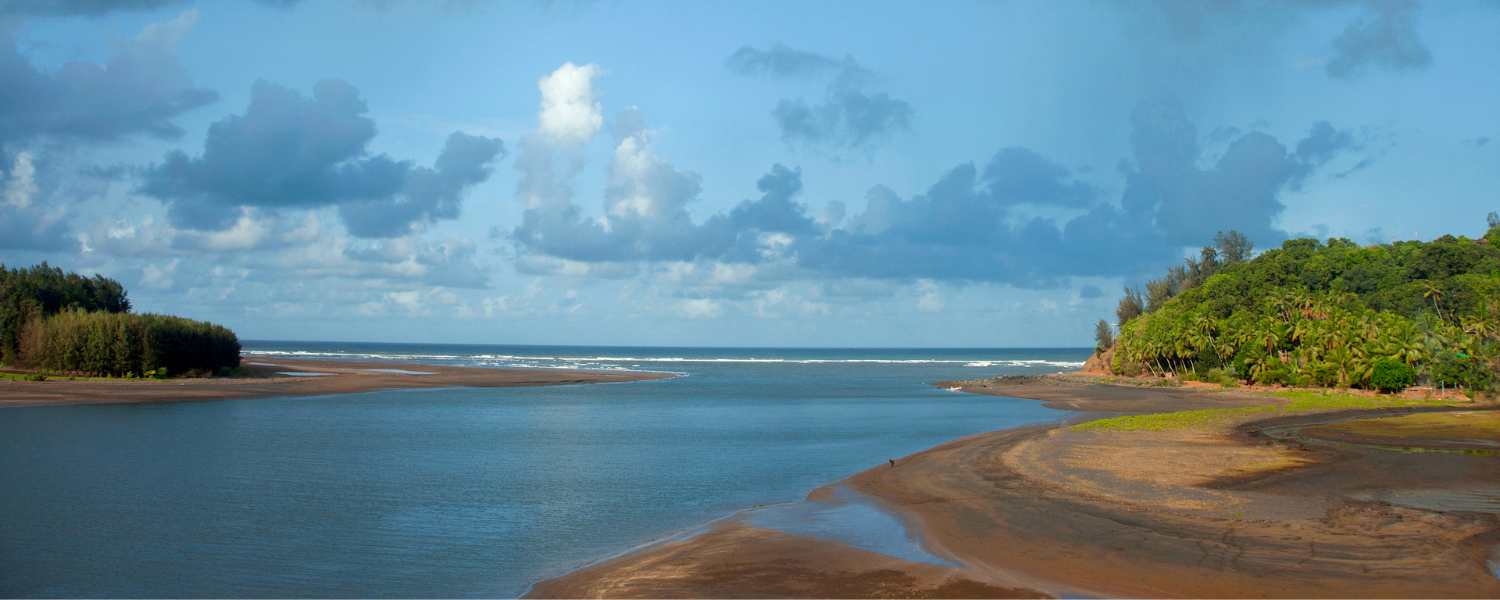
Diveagar Beach on the Konkan coast is a hidden gem with its pristine shores and casuarina groves. The beach, flanked by hills and surrounded by a fishing village, offers a tranquil setting.
The Suvarna Ganesh Temple near Diveagar adds a spiritual touch to the area. Diveagar is not just a beach; it’s a peaceful haven where visitors can unwind amidst nature’s splendour.
Diveagar Beach is best visited during the post-monsoon and winter months, from October to February. The weather is pleasant, and the serene beach ambiance beckons visitors for a peaceful and rejuvenating coastal experience.
43. Kashid Beach
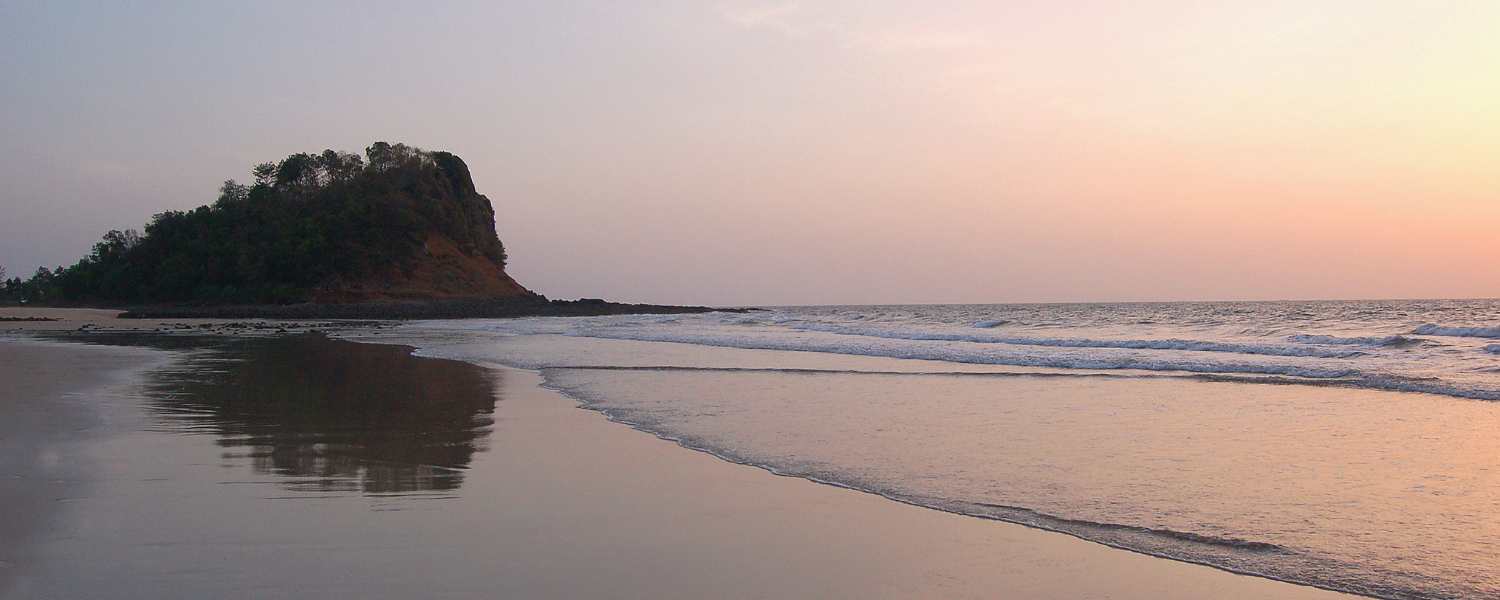
Kashid Beach, known for its white sand and clear turquoise waters, is a picturesque stretch along the Arabian Sea. Surrounded by casuarina groves, Kashid is a sought-after place for those seeking a beach experience.
Water sports, beach camping, and the historic Murud Janjira Fort in the vicinity add to the recreational options at Kashid Beach.
44. Guhagar Beach

Guhagar Beach, situated on the Konkan coast, is known for its long and pristine shoreline. The beach, fringed with Suru trees and adorned with red sand, provides a peaceful escape.
The nearby Vyadeshwar Temple and the Guhagar-Danda Fort offer exploration and cultural immersion opportunities. Guhagar is a tranquil coastal destination where visitors can connect with nature and experience the unhurried pace of Konkan life.
45. Tarkarli Beach
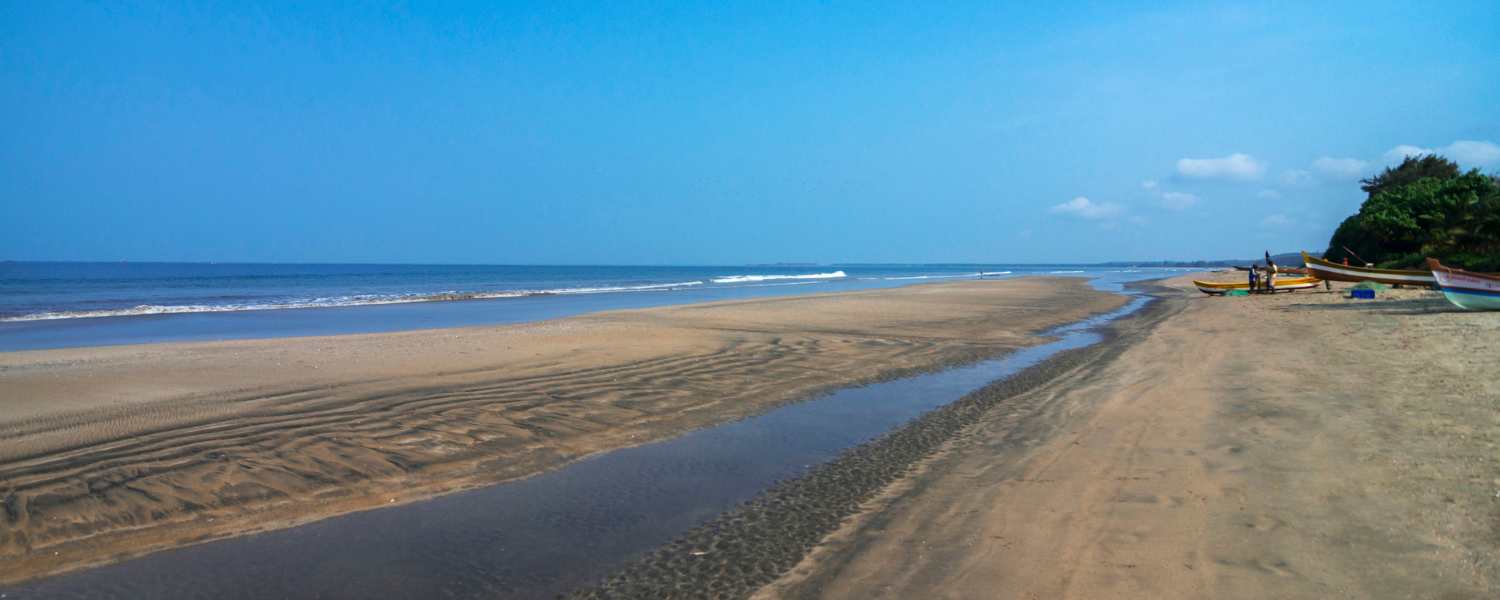
Tarkarli Beach, in the Malvan region, and the nearby Tarkarli backwaters are a haven for water sports enthusiasts. Snorkelling and scuba diving allow visitors to check the underwater wonders of the Arabian Sea. Tarkarli’s unspoiled beauty and aquatic adventures make it a must-visit place for beach lovers and water enthusiasts.
46. Ratnagiri Beach

Ratnagiri Beach, located in the Ratnagiri district, is a serene coastline that blends sandy shores and rocky cliffs. The beach, known for its gentle waves and clear waters, offers a tranquil retreat.
The Ratnadurg Fort, perched on a hill overlooking the Arabian Sea, adds a historical and architectural dimension to the area. Ratnagiri Beach is a destination where nature’s beauty and historical heritage converge.
47. Vengurla Beach

Vengurla Beach, situated in the Sindhudurg district, is a hidden coastal jewel known for its pristine shores and scenic landscapes.
The beach, surrounded by lush greenery, provides a serene setting for relaxation. The historic Vengurla Lighthouse and the Mochemad Beach nearby offer additional attractions for those exploring the region.
48. Kelshi Beach
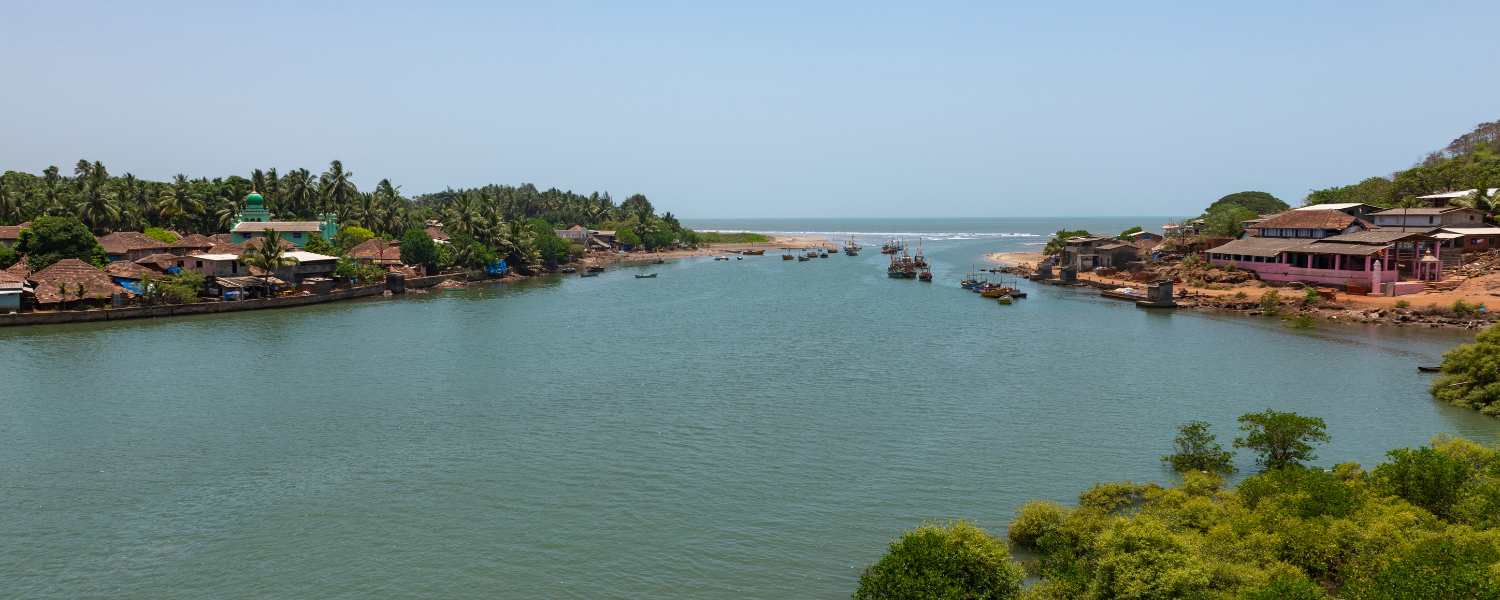
Tranquillity and unspoiled beauty define Kelshi Beach, tucked away in the Ratnagiri district. The beach, lined with palm trees, offers a peaceful retreat.
The nearby Yaqub Baba Dargah and the scenic Kelshi-Dapoli Road add cultural and scenic dimensions to the area. Kelshi Beach is a destination for those seeking solitude and a connection with the coastal landscapes of Konkan.
49. Dahanu-Bordi Beach

Sandy shores and chikoo orchards line Dahanu-Bordi Beach, located in the Palghar district. The beach, fringed with coconut palms, offers a peaceful escape from the hustle of city life.
The nearby chikoo orchards add a unique agricultural charm to the area. Dahanu-Bordi Beach is a destination where visitors can enjoy the simplicity of coastal life and savour the region’s natural bounty.
50. Lavasa

Lavasa, often called India’s first planned hill station, is a picturesque town amidst the Sahyadri Mountains. The city offers a serene escape with charming European-inspired architecture, artificial lakes, and lush greenery.
Water sports, lakeside promenades, and the vibrant town center make Lavasa popular for those seeking relaxation and adventure in the Western Ghats.
51. Panhala
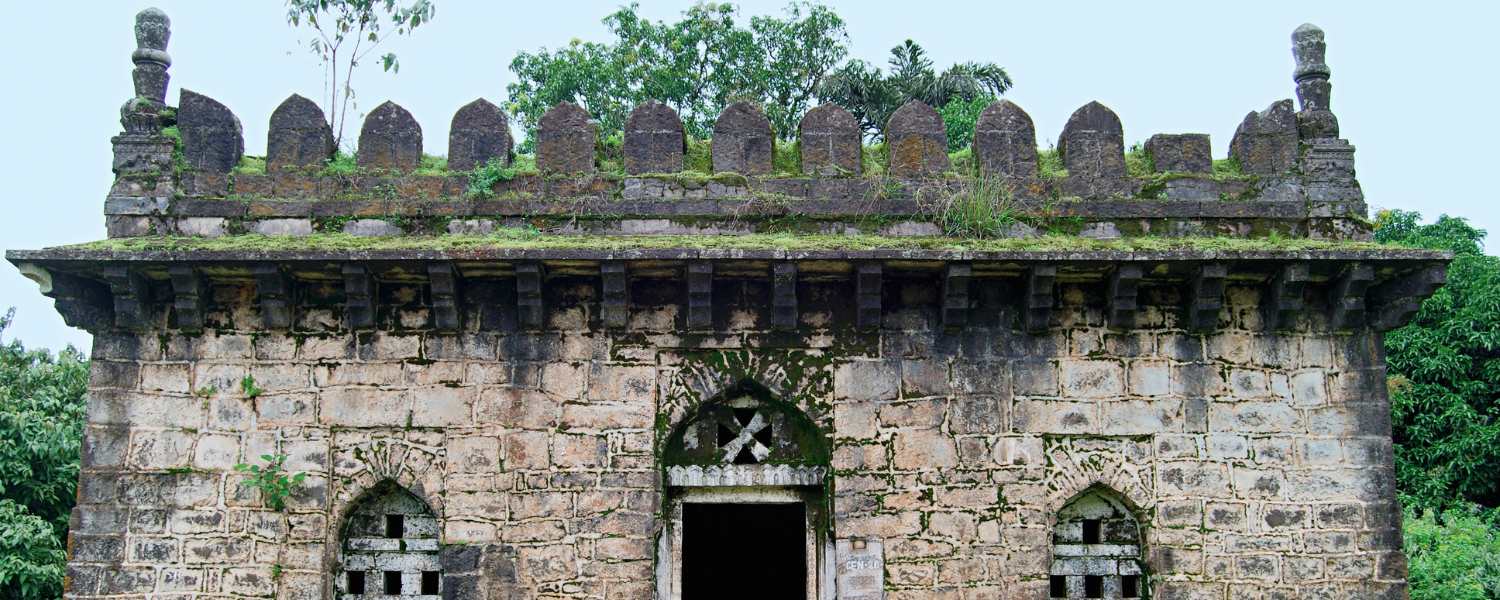
The fort and panoramic views of the Sahyadris define Panhala, a historic hill station situated near Kolhapur. The Panhala Fort, perched atop a hill, offers a glimpse into Maratha history and provides breathtaking vistas of the surrounding valleys.
The cool climate, historical significance, and tranquil ambiance make Panhala a preferred destination for history enthusiasts and nature lovers.
52. Chikhaldara

The scenic beauty of Chikhaldara, coupled with viewpoints like Hurricane Point and Devi Point, creates a tranquil atmosphere.
The Melghat Tiger Reserve, home to diverse flora and fauna, adds a touch of wildlife adventure to the region. Chikhaldara is a retreat for those seeking natural splendour and a refreshing climate.
53. Amboli
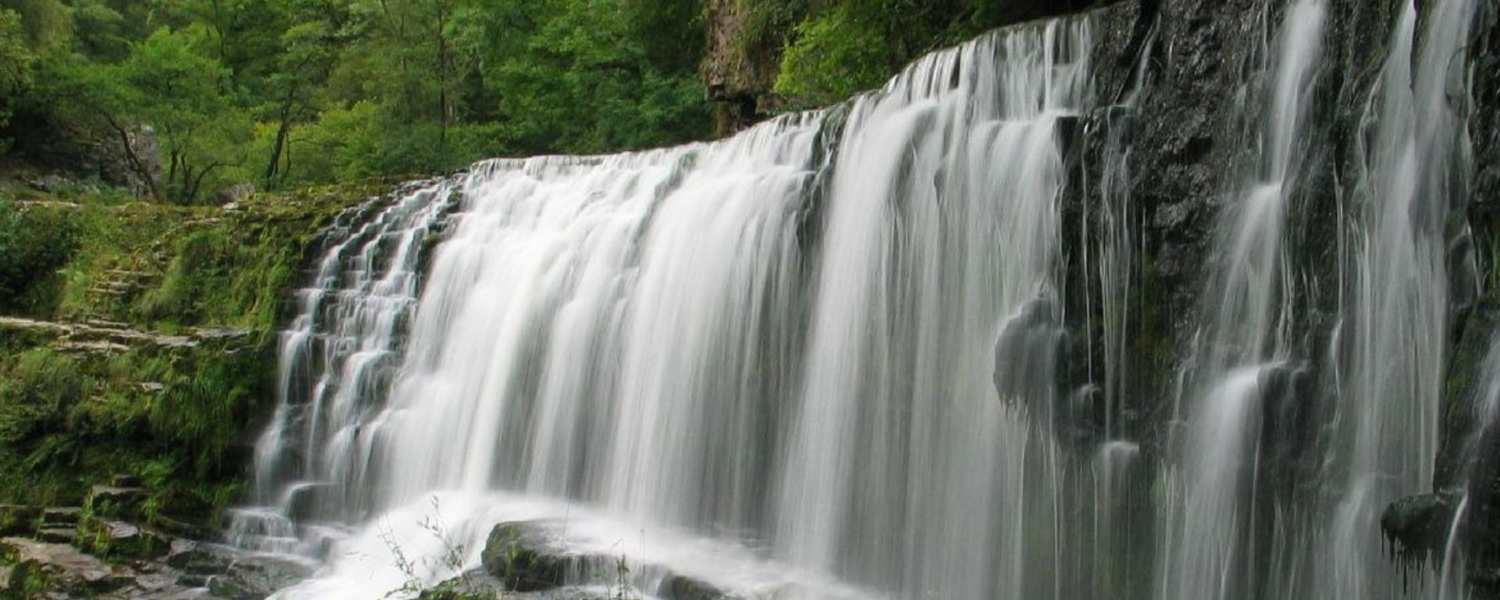
Misty landscapes, waterfalls, and lush greenery define Amboli, a quaint hill station nestled in the Western Ghats.
The Amboli Ghat, with its numerous viewpoints, offers panoramic vistas of the surrounding valleys. The biodiversity-rich Amboli Wildlife Sanctuary adds an ecological dimension to the region.
Amboli is a haven for nature lovers, bird watchers, and those seeking a peaceful retreat in the lap of the Sahyadris.
54. Toranmal

Dense forests, lakes, and temples surround Toranmal, a hill station located in the Satpura Range. The Gorakhnath Temple, situated on the pinnacle of the Toranmal Hills, is a spiritual and scenic highlight.
The Yashavant Lake and the tranquil Sita Khai add to the region’s natural beauty. Toranmal, with its cool climate and pristine landscapes, is a lesser-explored gem in Maharashtra.
55. Jawhar
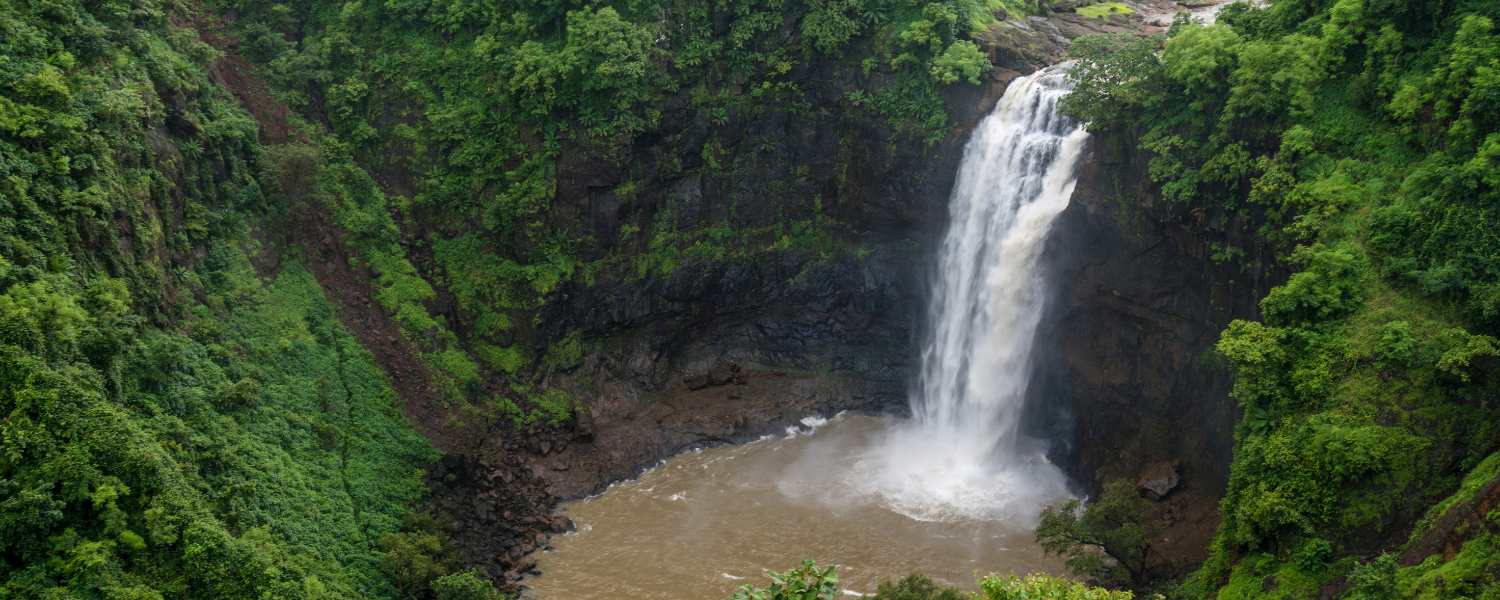
Vibrant Warli art and cultural heritage define Jawhar, a hill station often called the ‘Mahabaleshwar of Thane. The Jai Vilas Palace, adorned with Warli paintings, and the picturesque Hanuman Point are among the attractions. Jawhar’s serene ambiance and cultural richness make it a destination for those seeking art, history, and natural beauty.
56. Satara
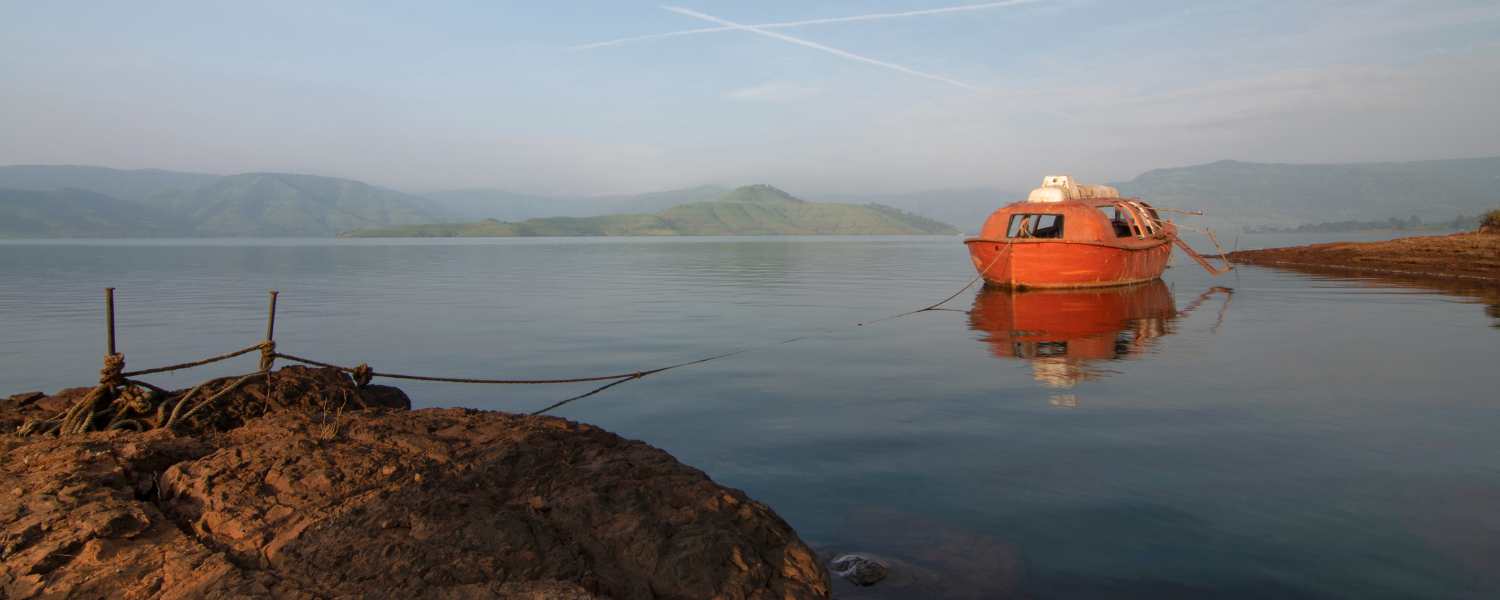
Lush hills, valleys, and historical landmarks surround Satara, situated in the Western Ghats. The historic Ajinkyatara Fort and the tranquil Sajjangad Fort add to Satara’s cultural and natural appeal. Satara is a gateway to the Sahyadris, offering travelers diverse experiences.
57. Lonavala

Landscapes, waterfalls, and historic caves define Lonavala, a popular hill station nestled in the Sahyadris. It is also a popular tourist place in Maharashtra.
Tiger’s Leap, Bhushi Dam, and the ancient Karla and Bhaja Caves are among the attractions. The cool climate and the charm of the twin hill stations, Lonavala and Khandala, make it a favored destination for weekend getaways and nature retreats.
58. Khandala

Lush green hills and valleys surround Khandala, a twin town to Lonavala. The dramatic Western Ghats, the pristine Duke’s Nose viewpoint, and the historic Korigad Fort provide a range of experiences for visitors.
Khandala, known for its misty landscapes and the serpentine Mumbai-Pune Expressway cutting through the hills, is a scenic destination for those seeking a quick escape from the urban hustle.
59. Igatpuri

“Mist-covered hills, dense forests, and ancient temples surround Igatpuri, a hill station in the Western Ghats. The attractions include the Bhatsa River Valley, Tringalwadi Fort, and the Amruteshwar Temple.
Igatpuri’s cool climate and proximity to Mumbai make it a favored destination for trekking, nature walks, and spiritual retreats amidst the natural beauty of the Sahyadris.
60. Ranikhet, Ratnagiri
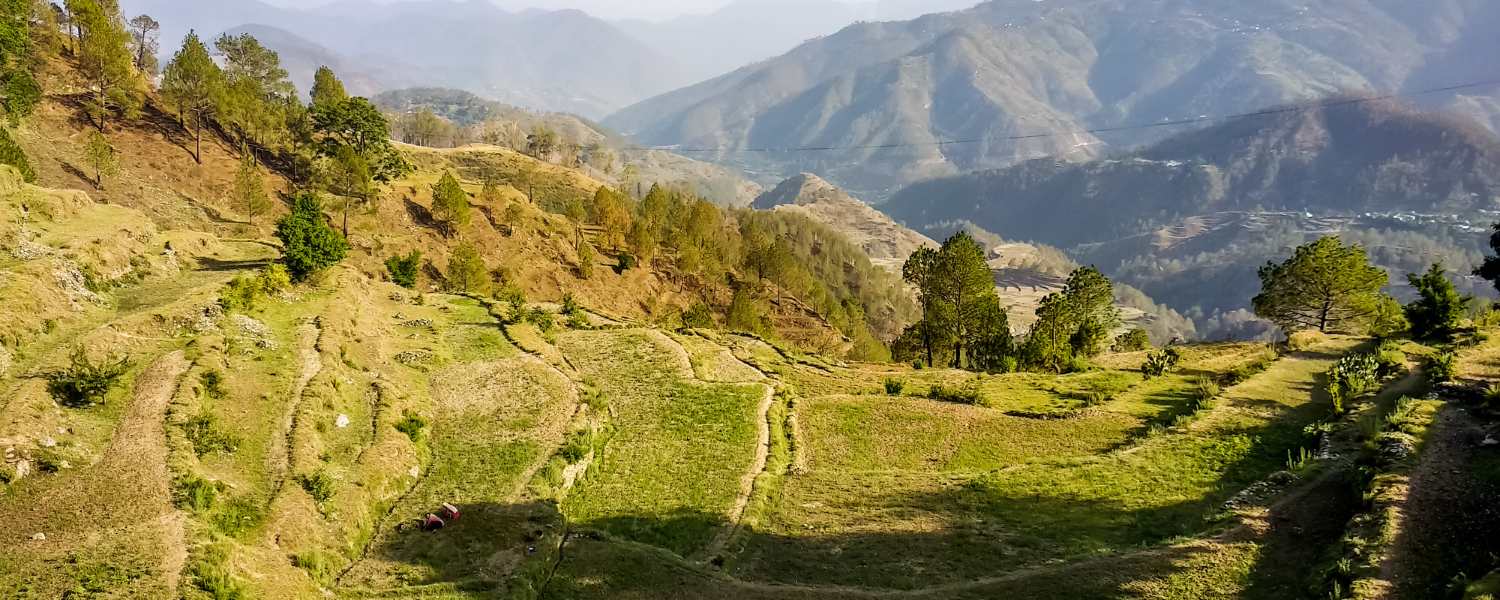
People should not confuse the serene hamlet of Ranikhet in the Ratnagiri district with the homonymous town in Uttarakhand. Surrounded by lush greenery and hills, Ranikhet offers a tranquil escape.
The tranquil beaches of Ganpatipule and the historical Prachin Konkan Museum add to the charm of this lesser-known destination.
61. Panshet Dam

Scenic hills and lush landscapes surround Panshet Dam, located near Pune. The dam offers opportunities for boating, water sports, and picnics along its banks.
The lush greenery, the blue waters of the reservoir, and the Sahyadri backdrop make Panshet Dam a popular destination for day trips and outdoor activities.
In conclusion, Maharashtra unfolds as a tapestry of diverse landscapes, each offering a unique and enriching experience for the discerning traveler.
From the misty hills of Lonavala and Khandala to the sun-kissed beaches of Ganpatipule and Alibaug, the state boasts many destinations that cater to every traveler’s preference.
Unplugged and unfiltered Maharashtra beckons you to explore its hidden gems, revel in its cultural grandeur and forge memories long after the journey concludes.
So, pack your bags, traverse the winding roads, and let Maharashtra unveil its treasures, one destination at a time.
